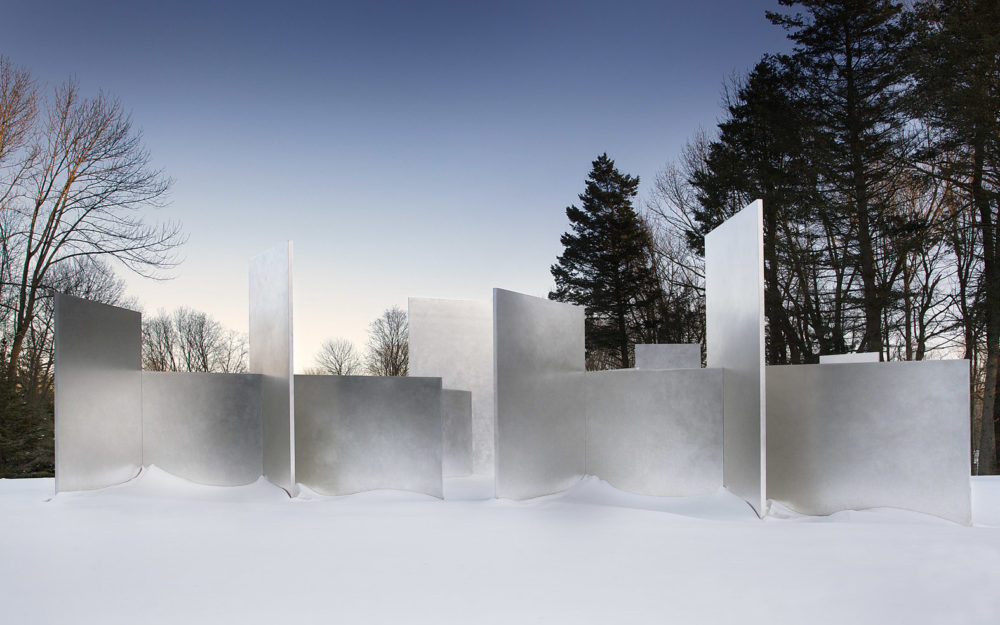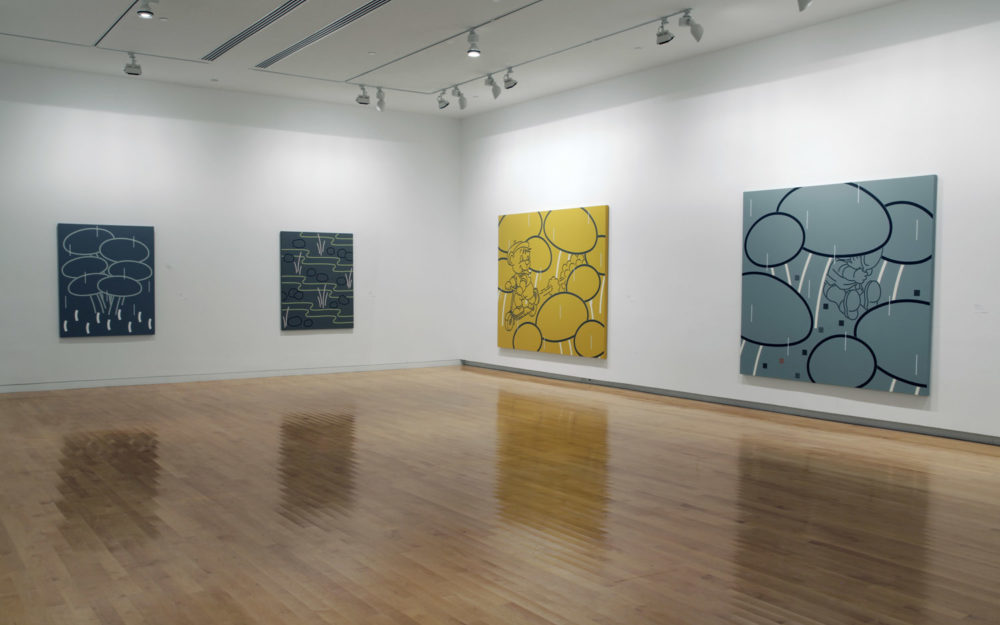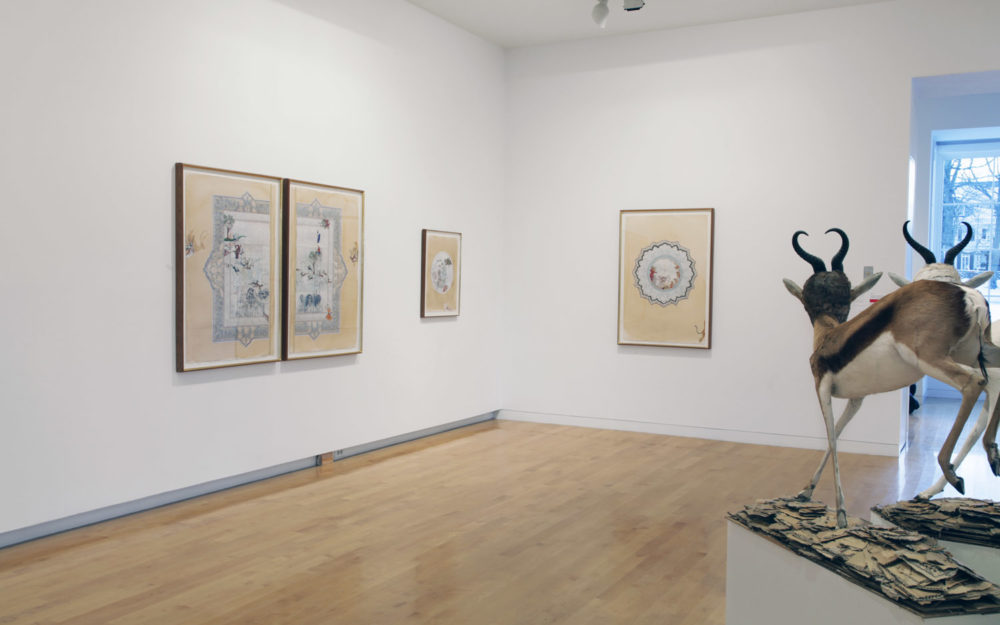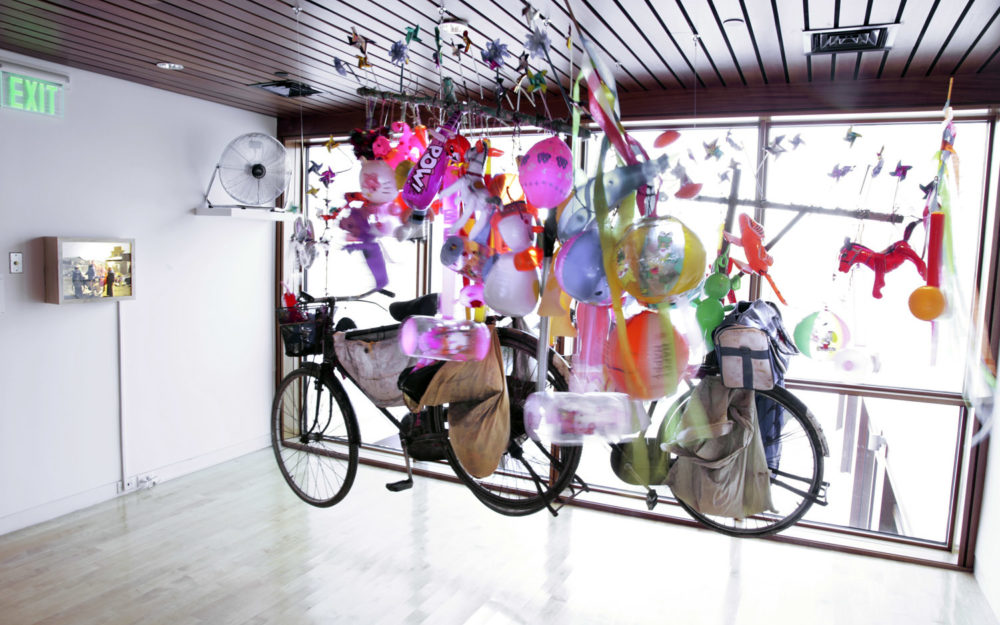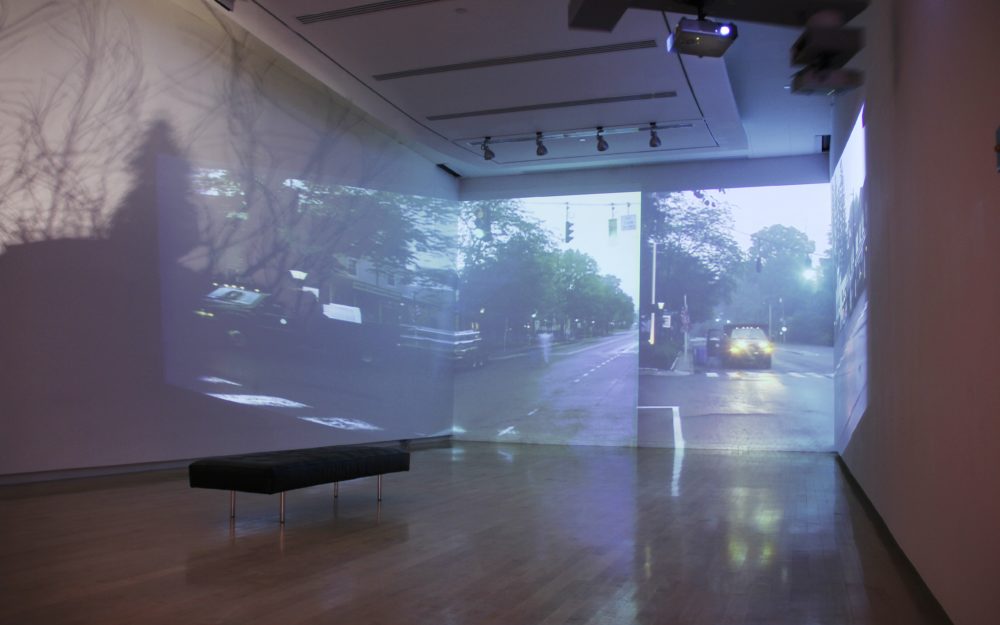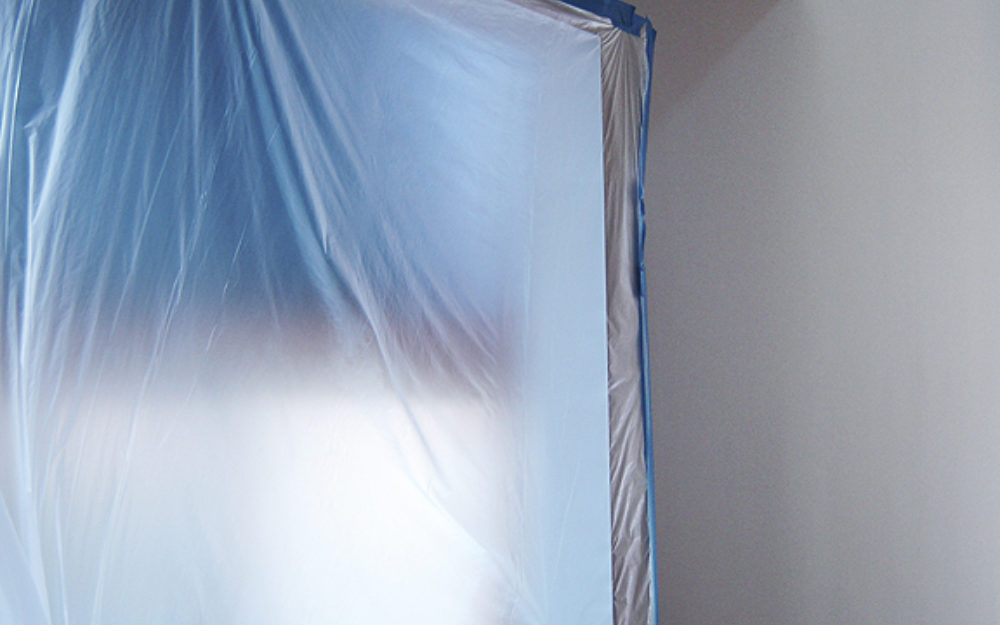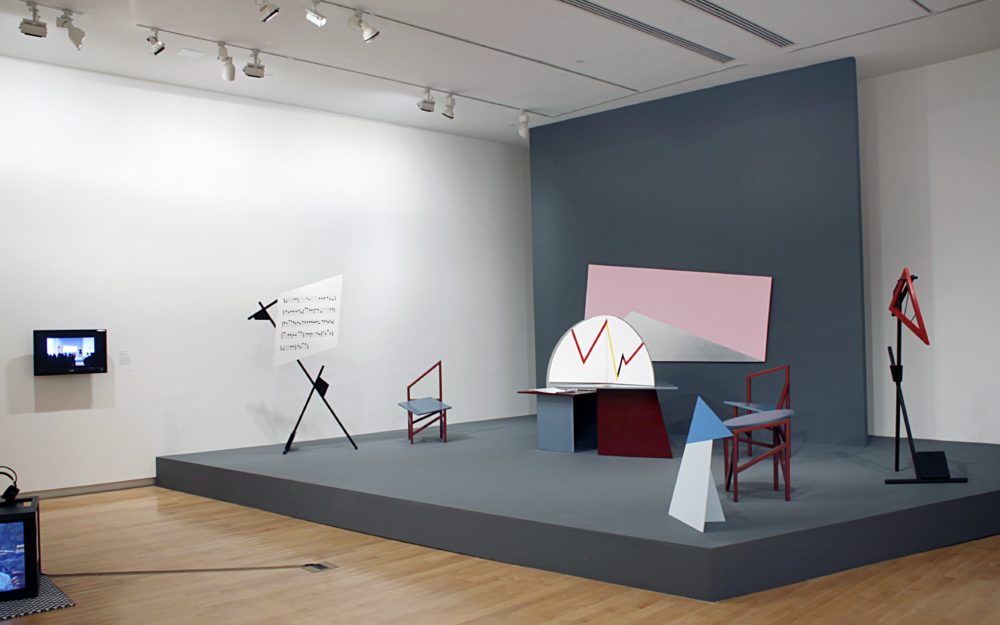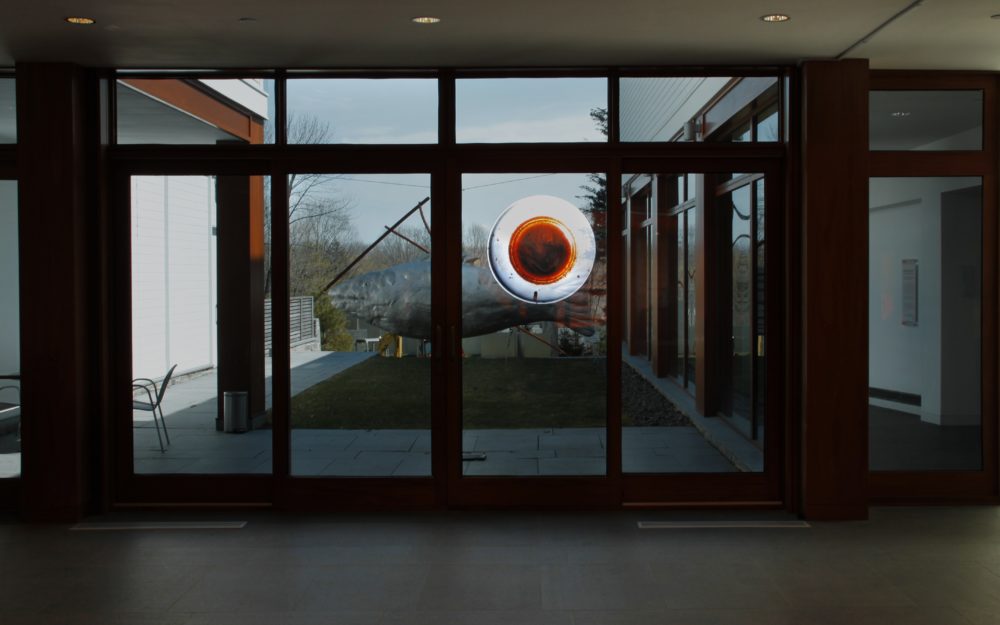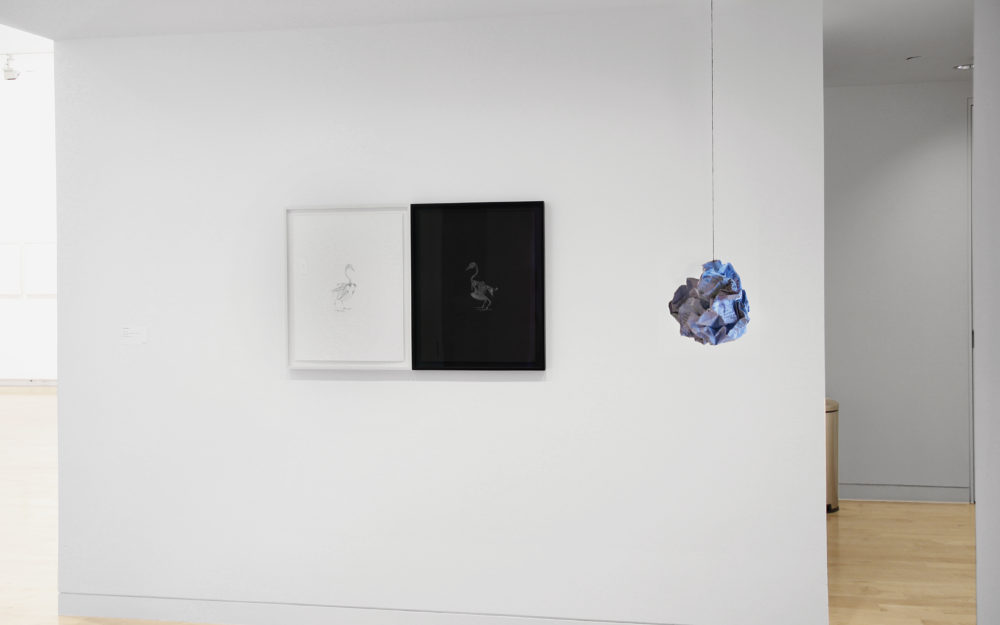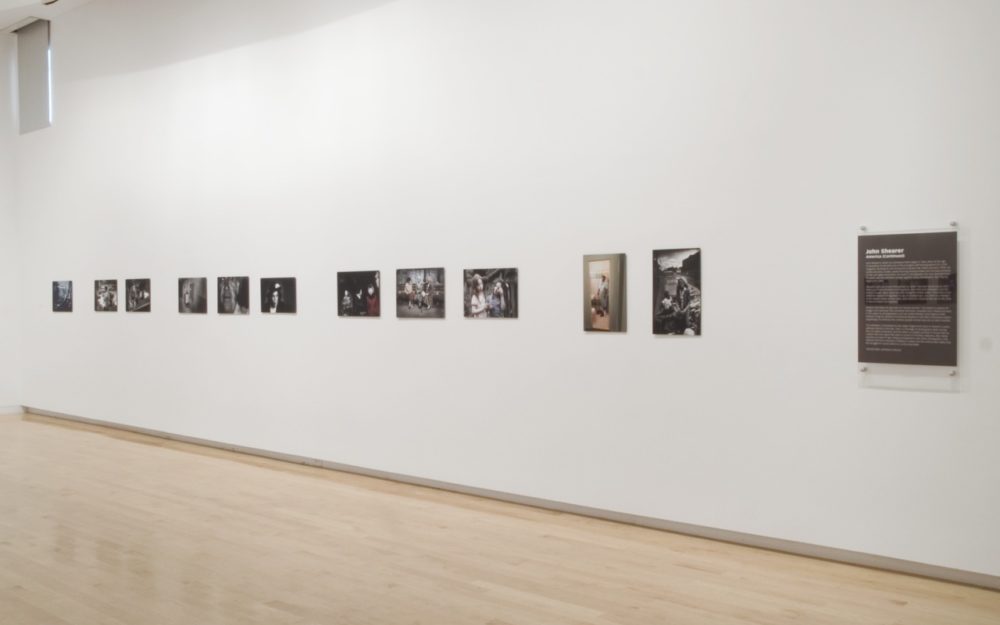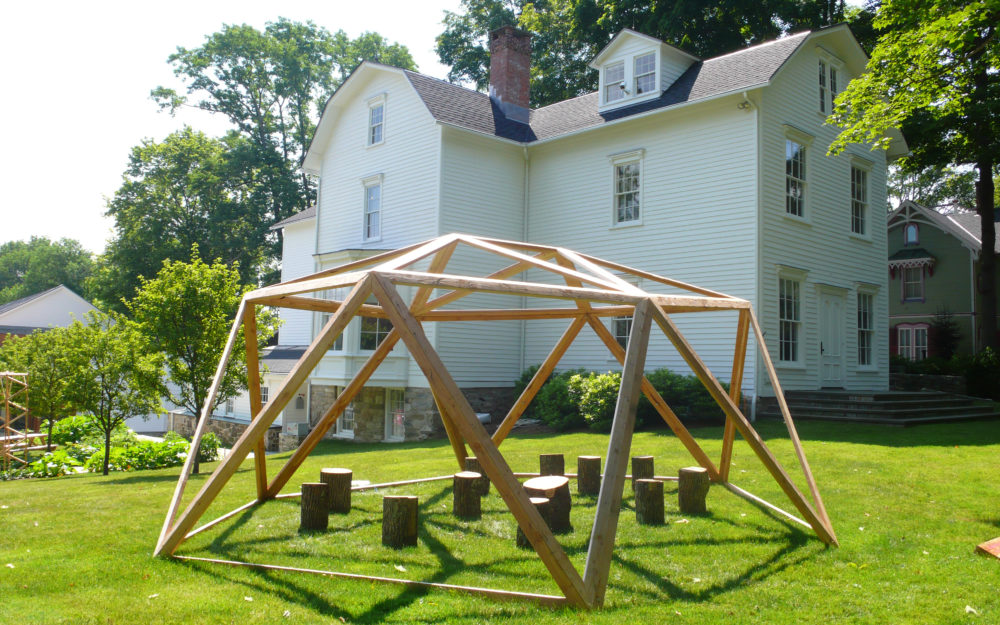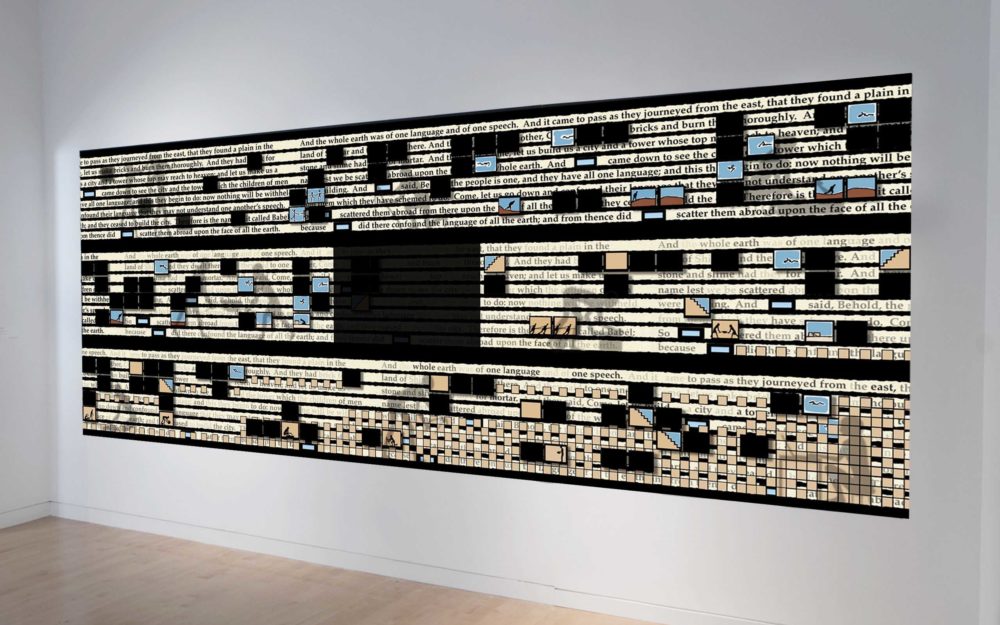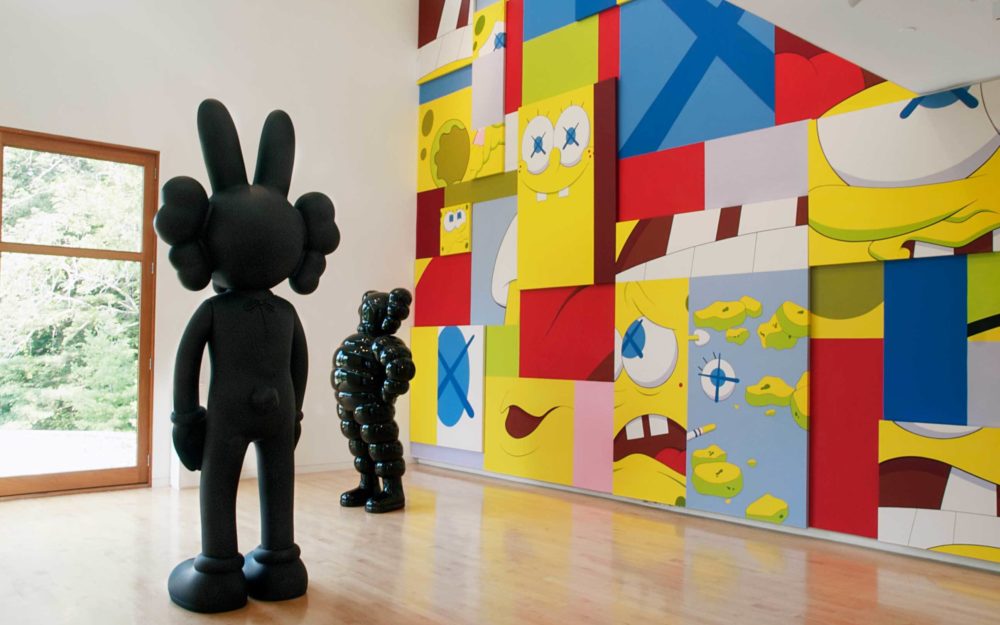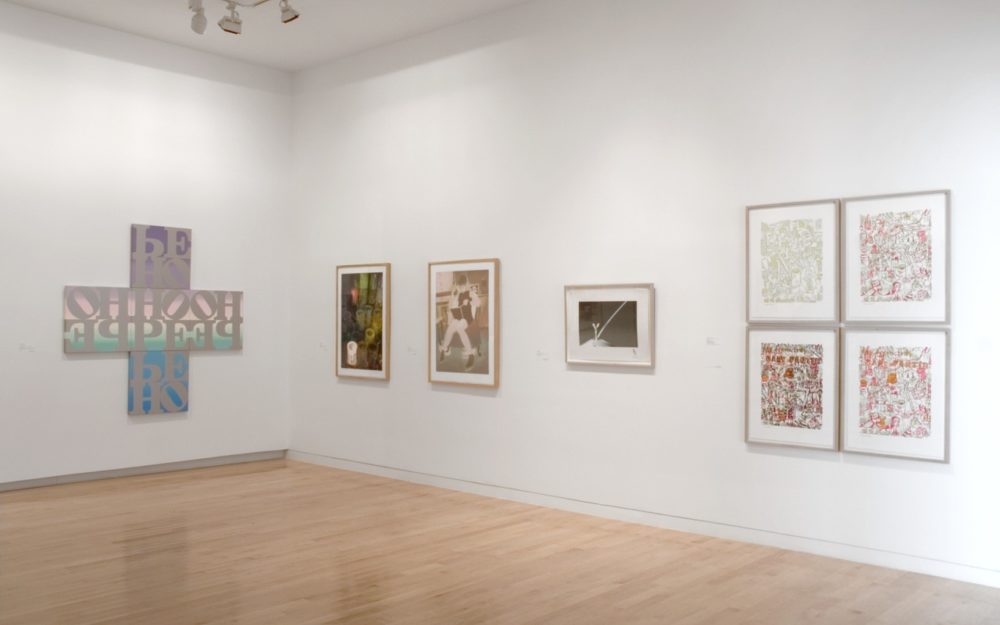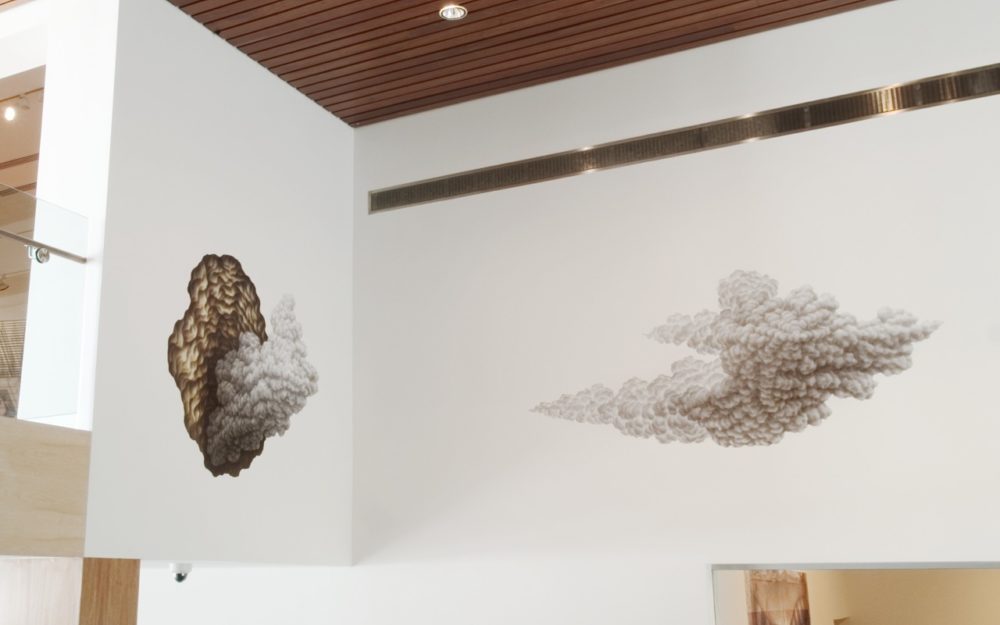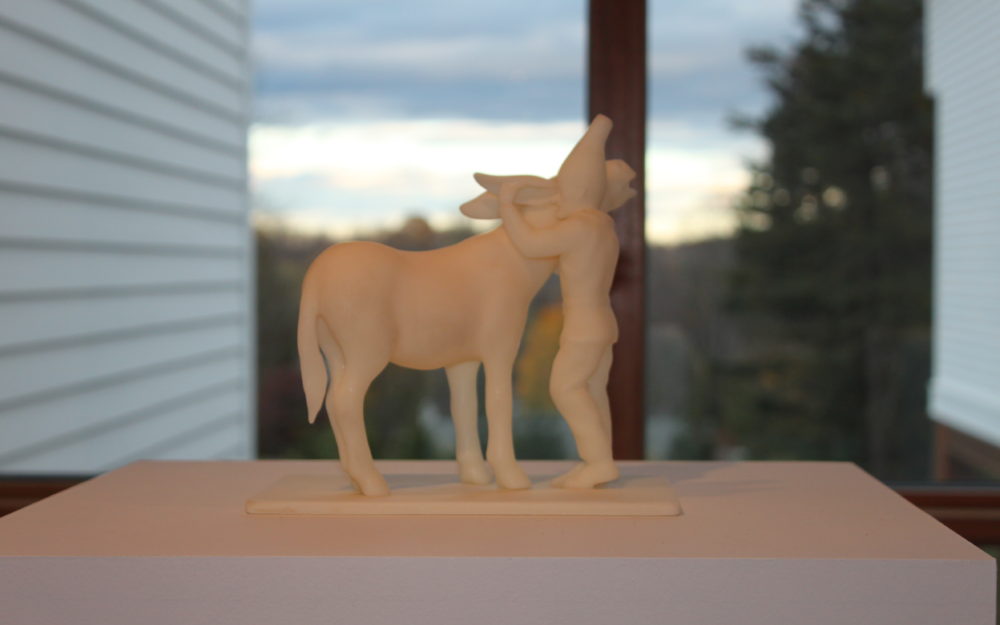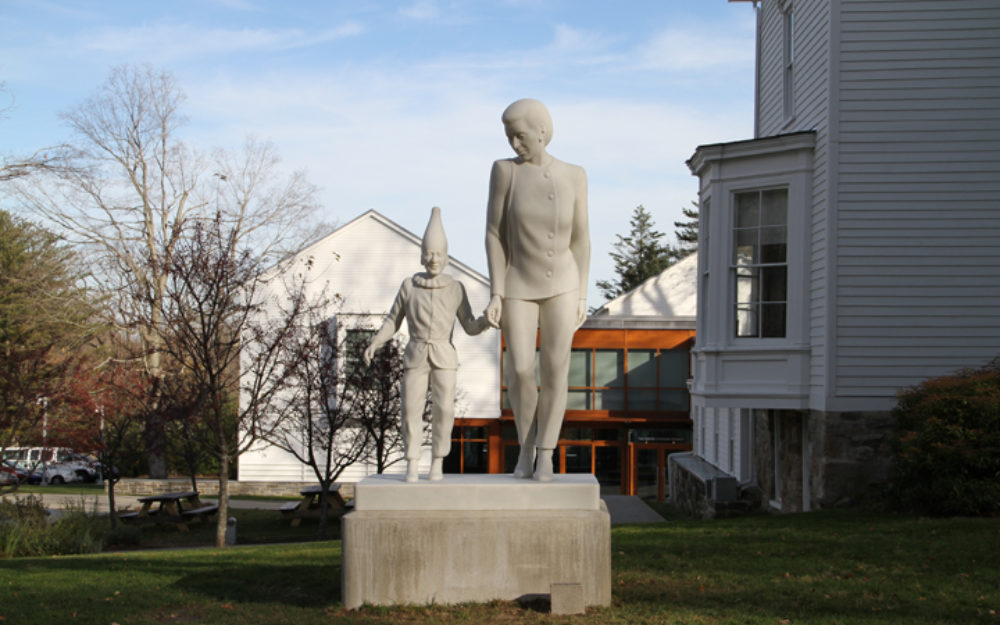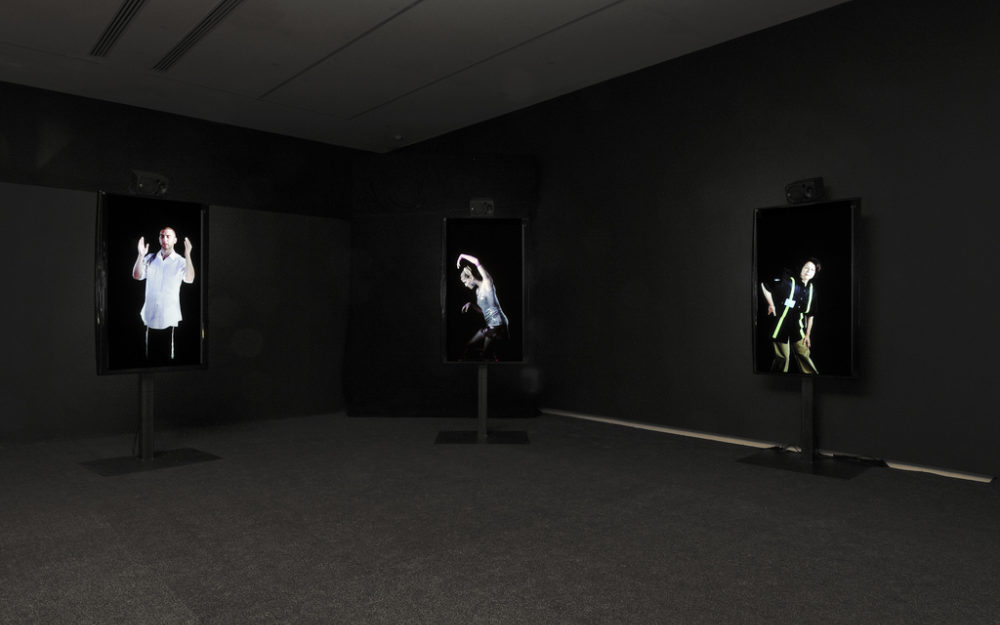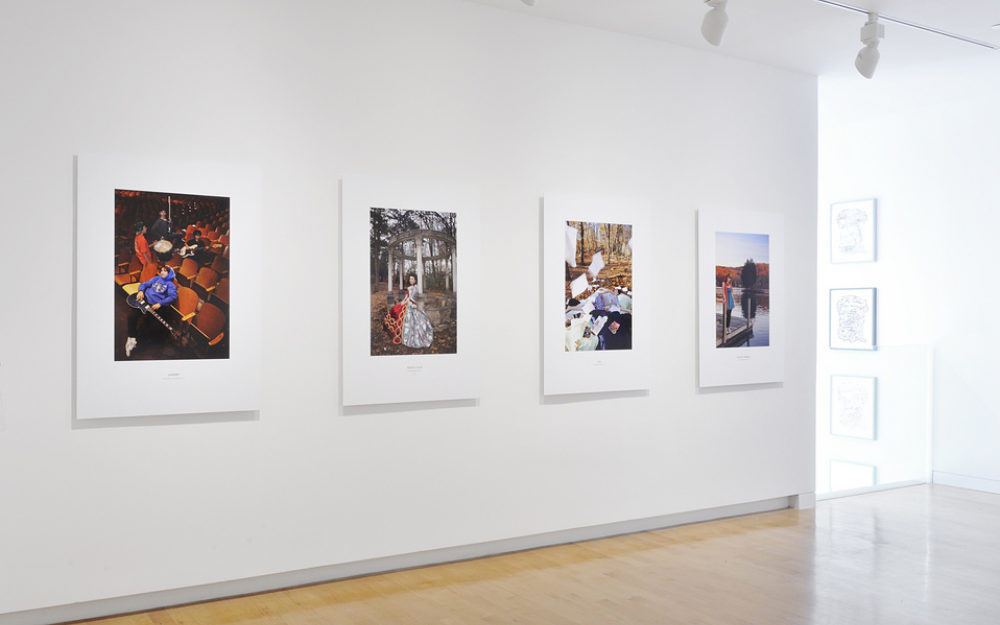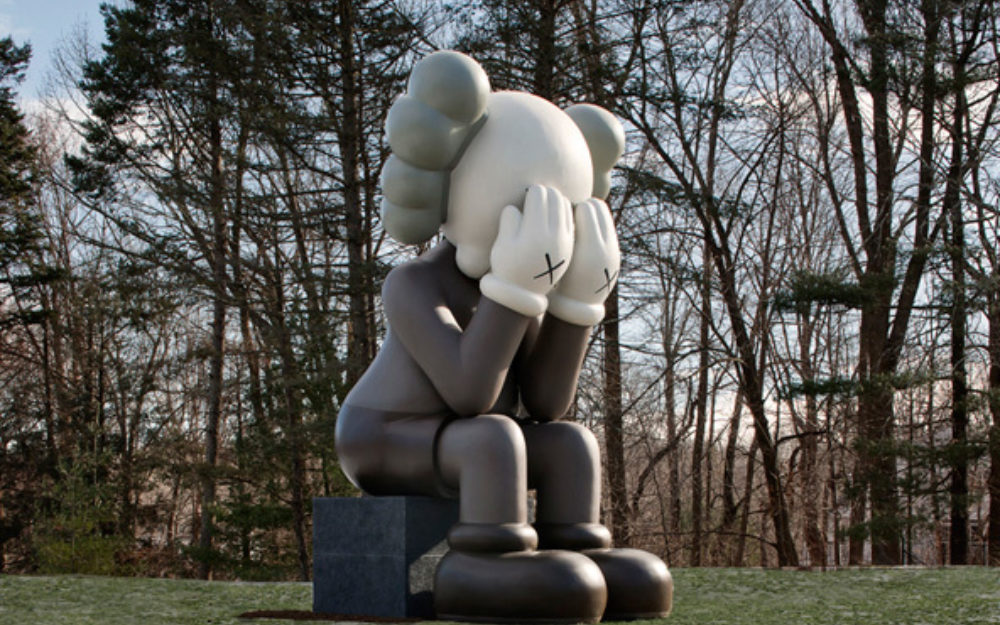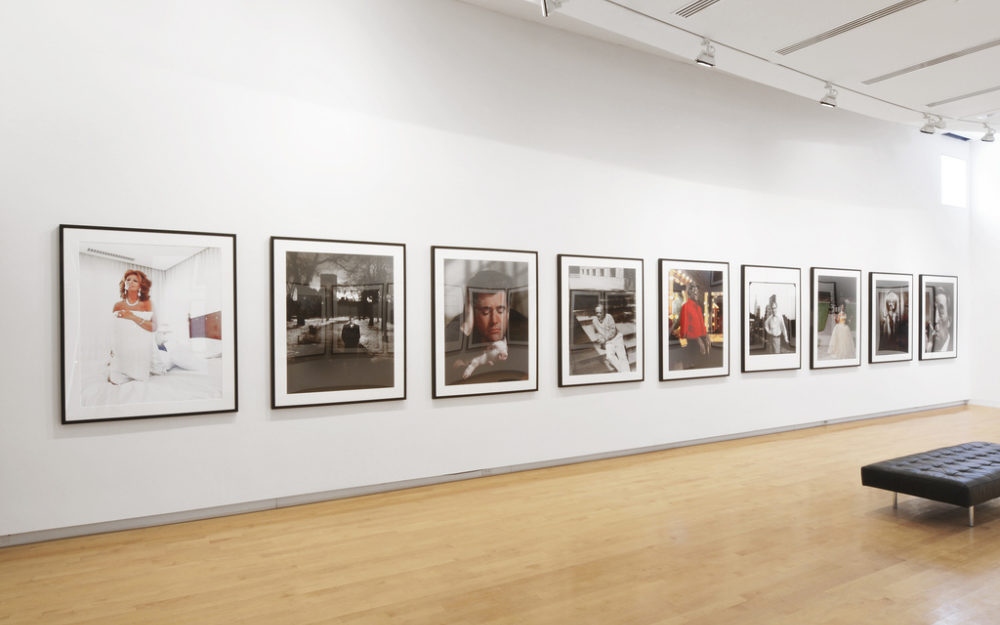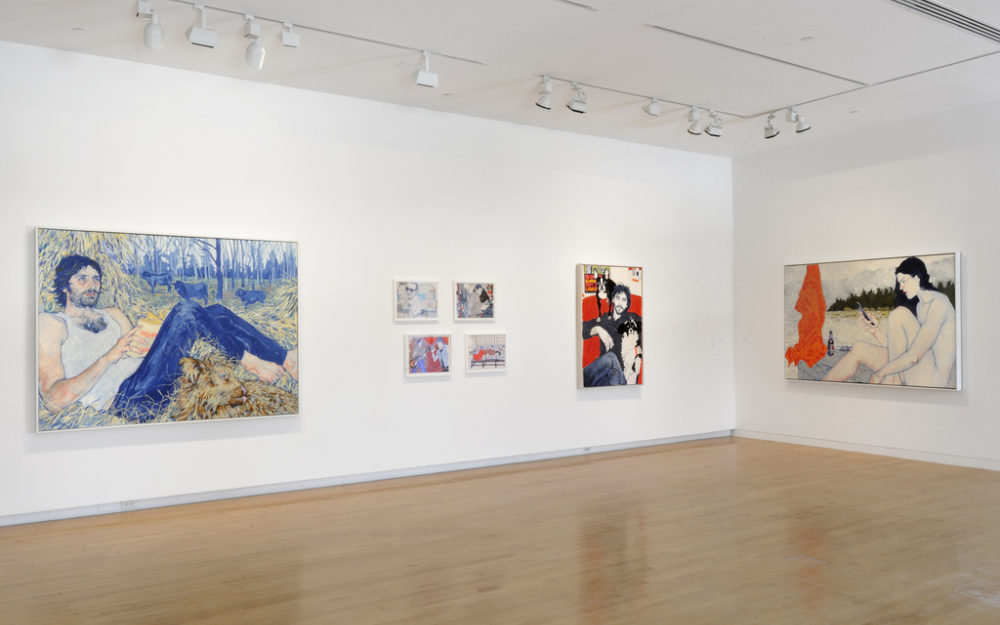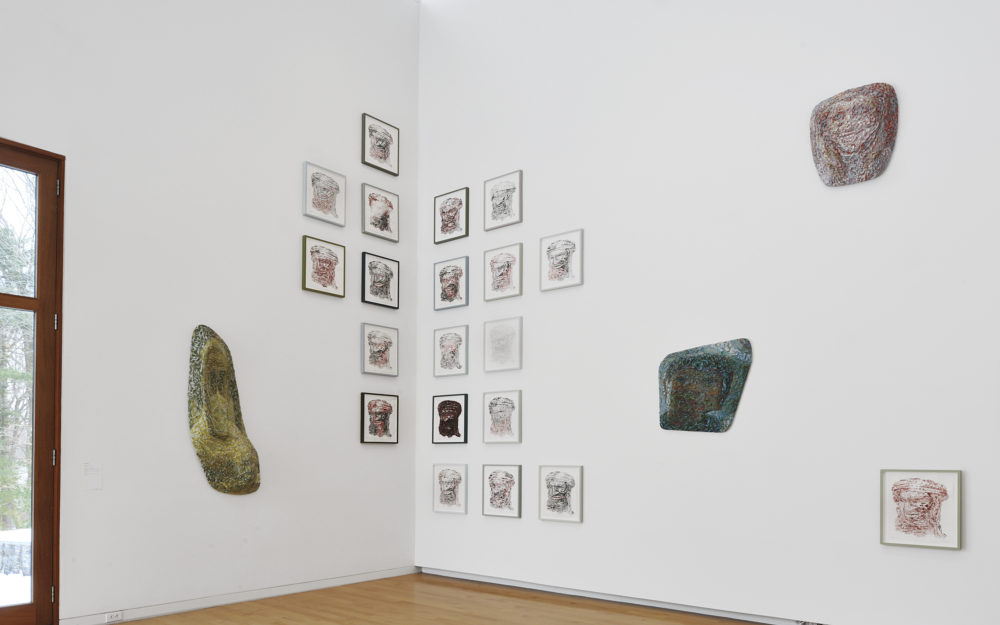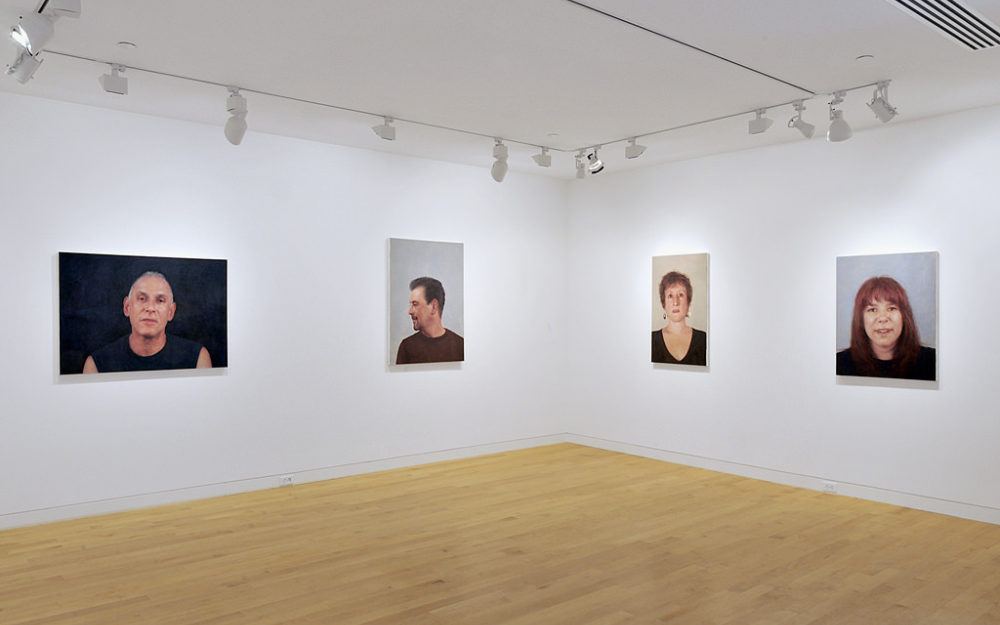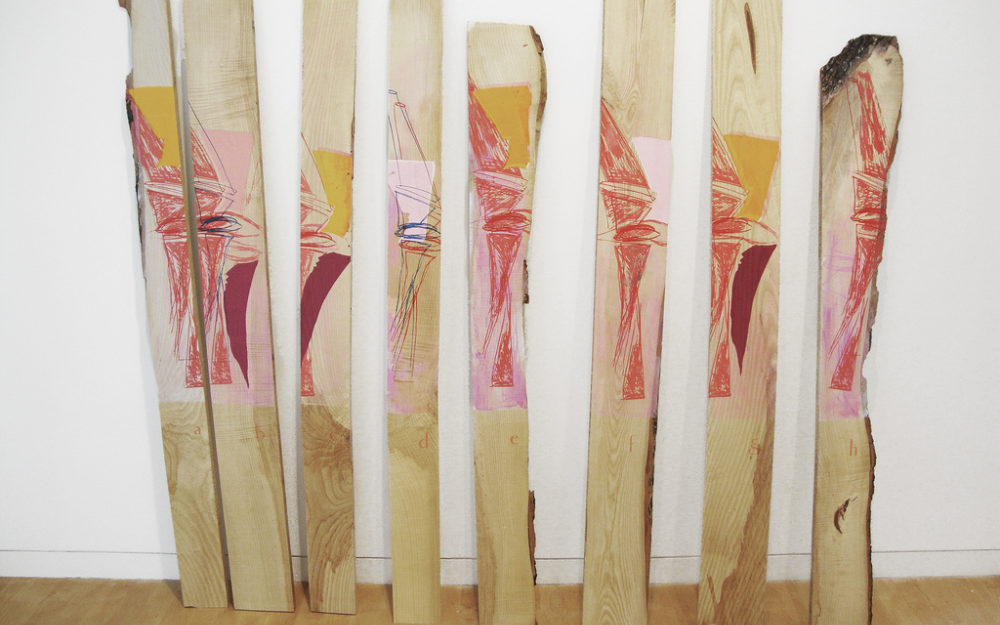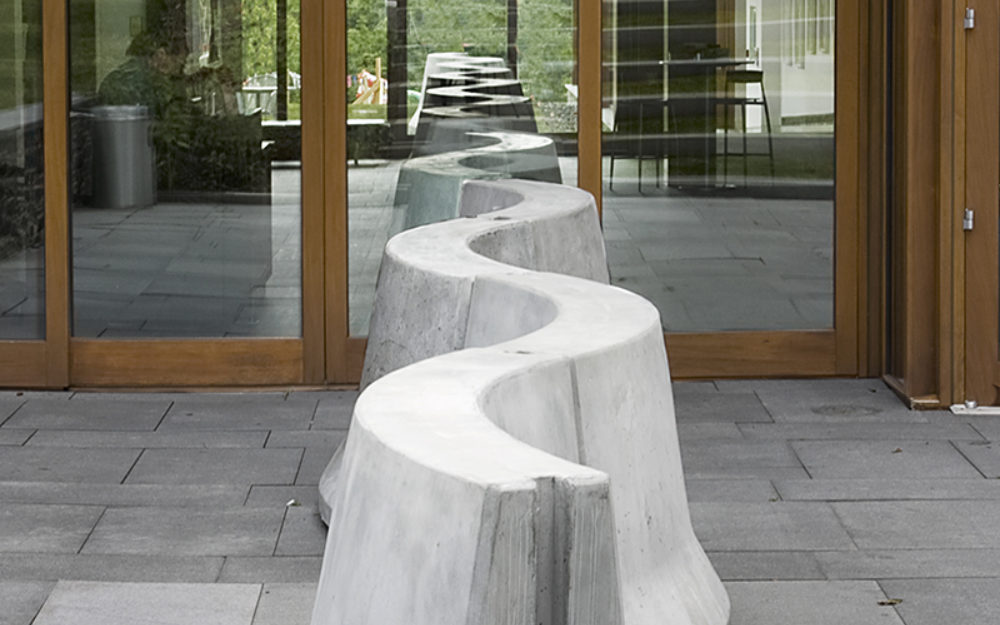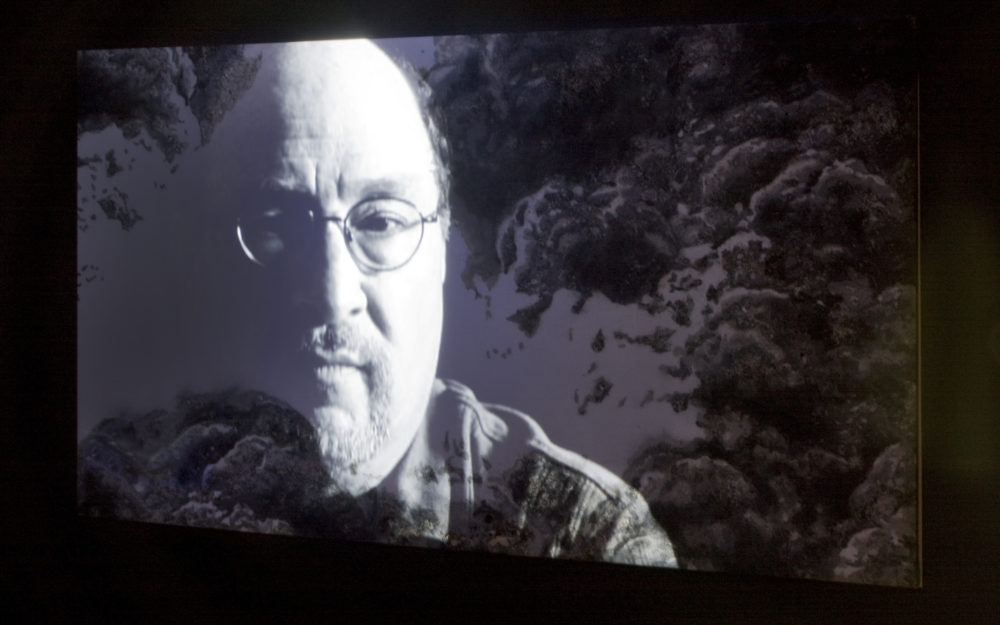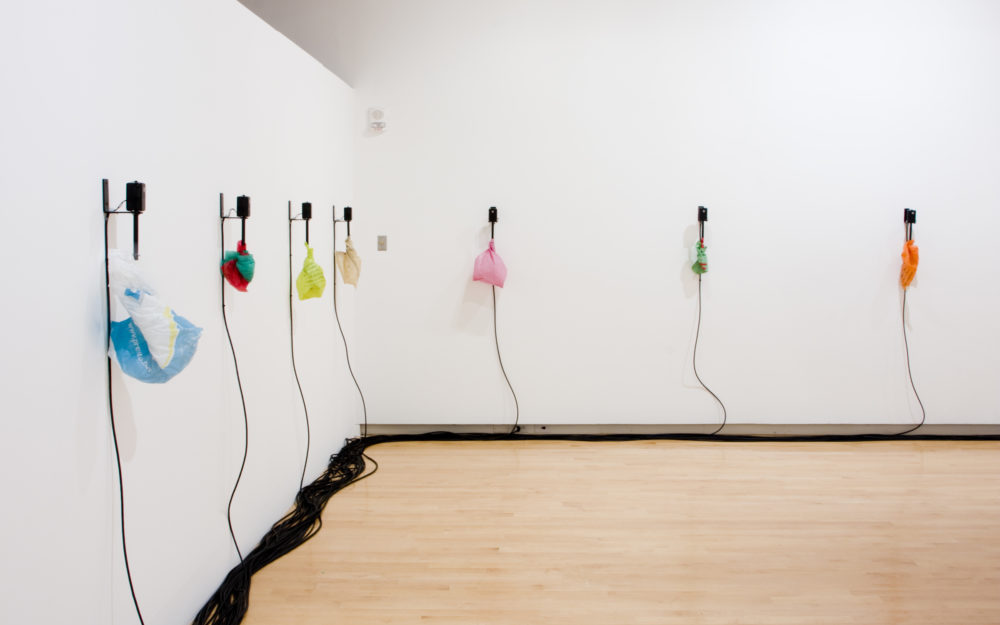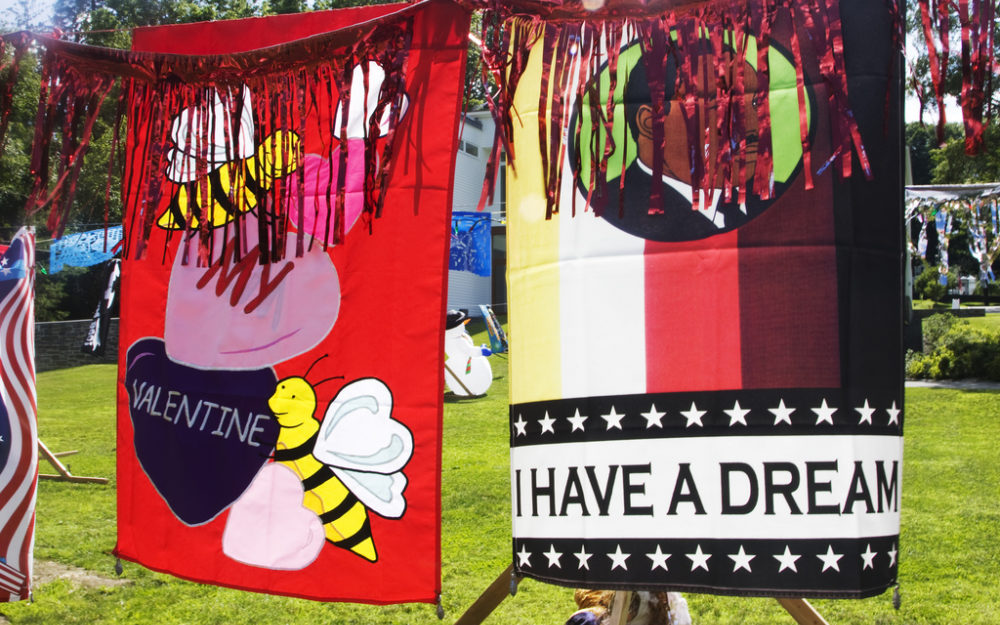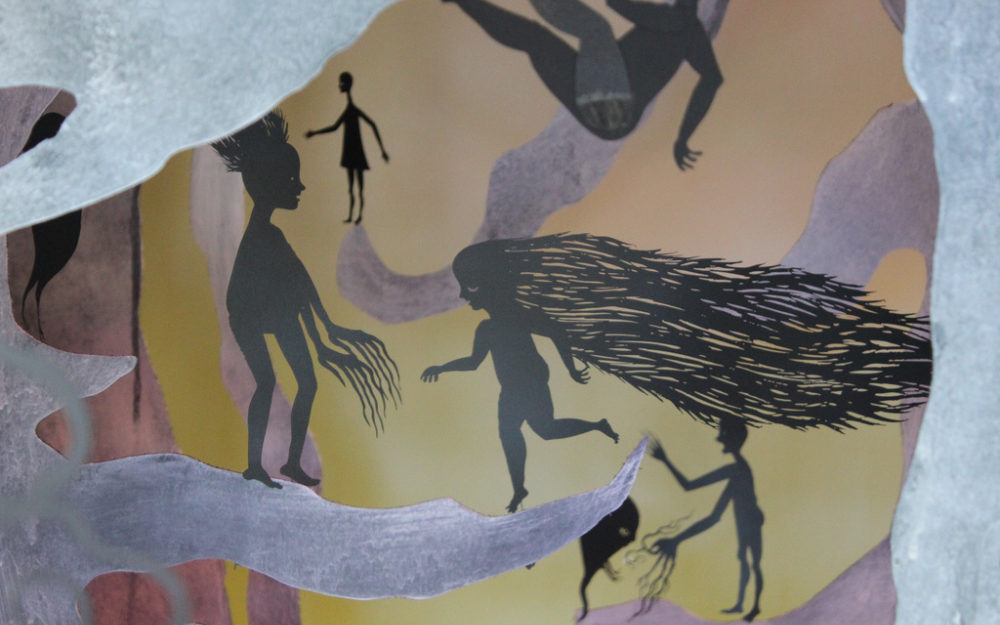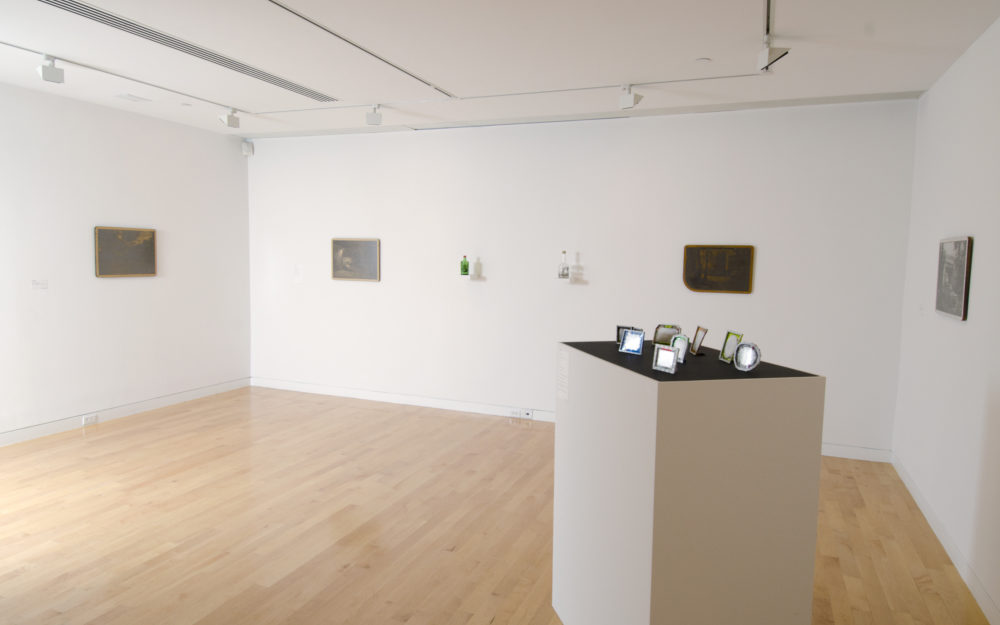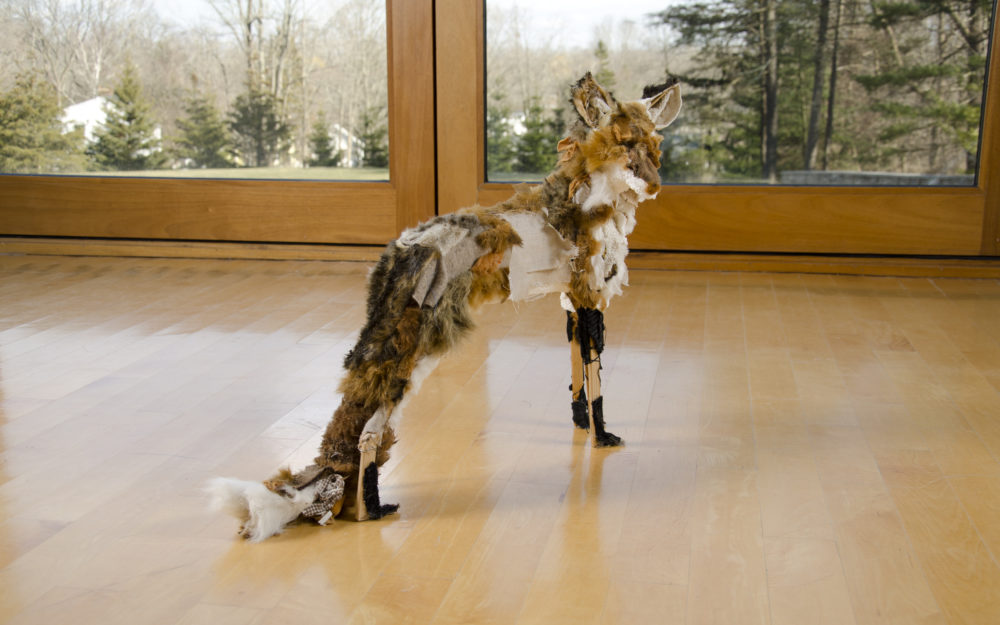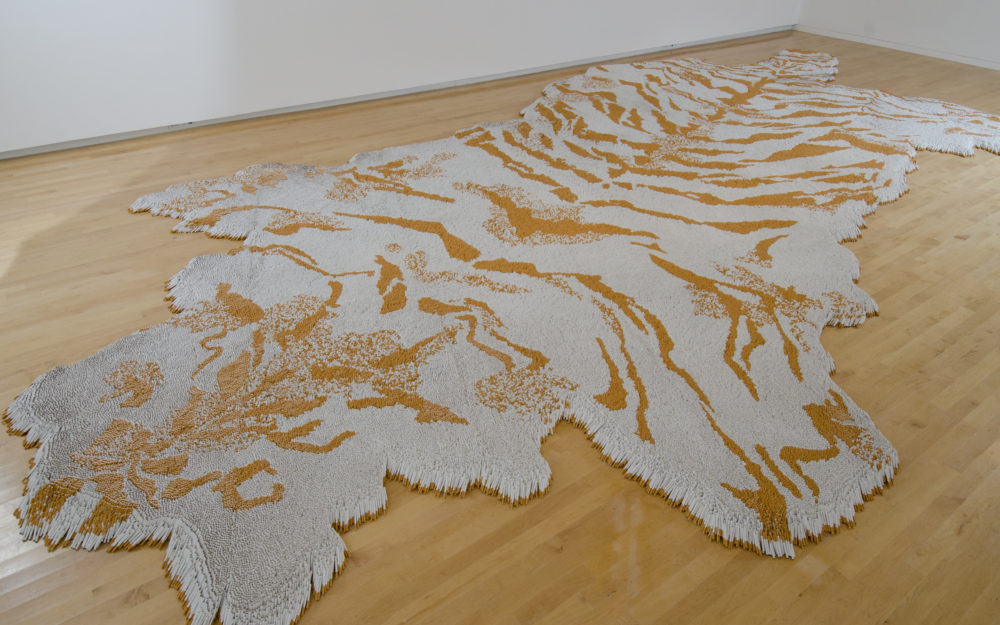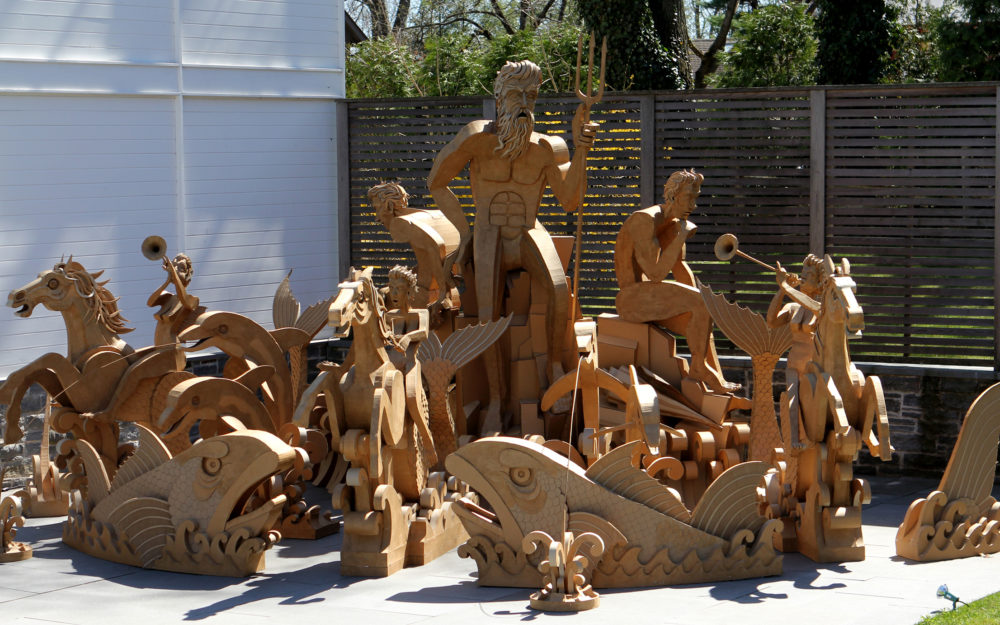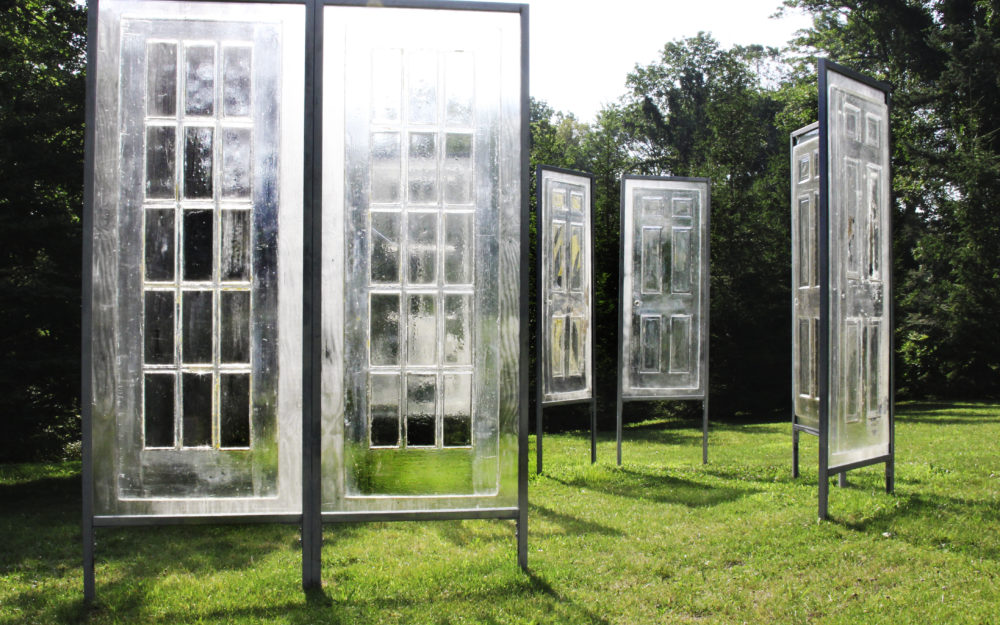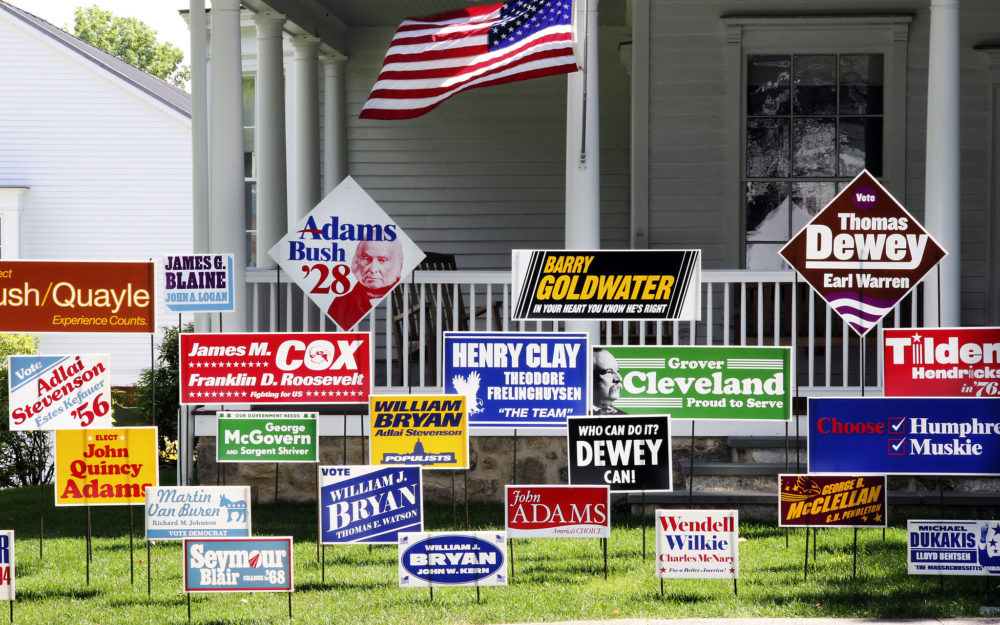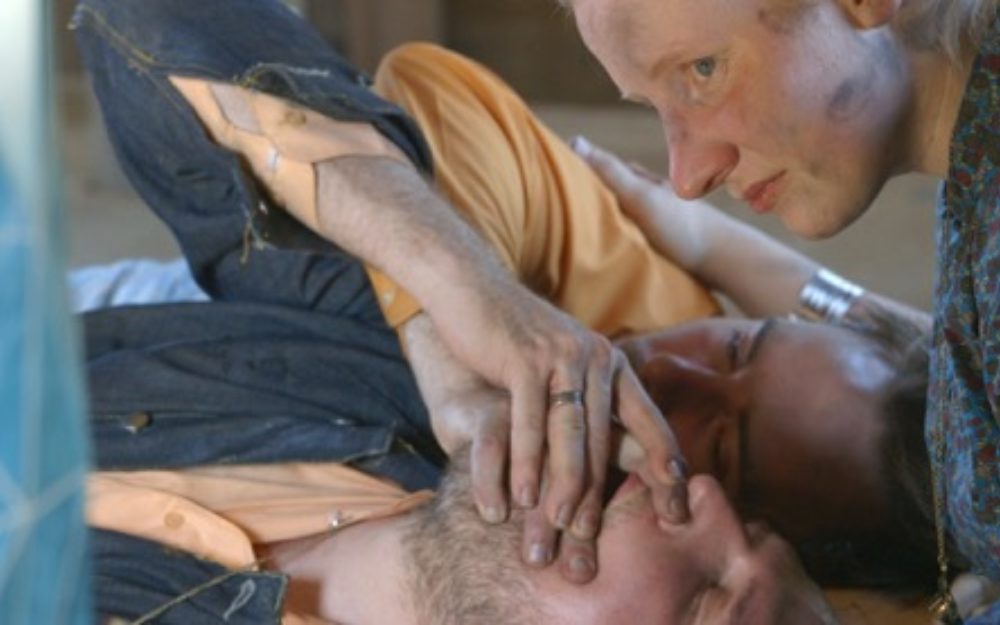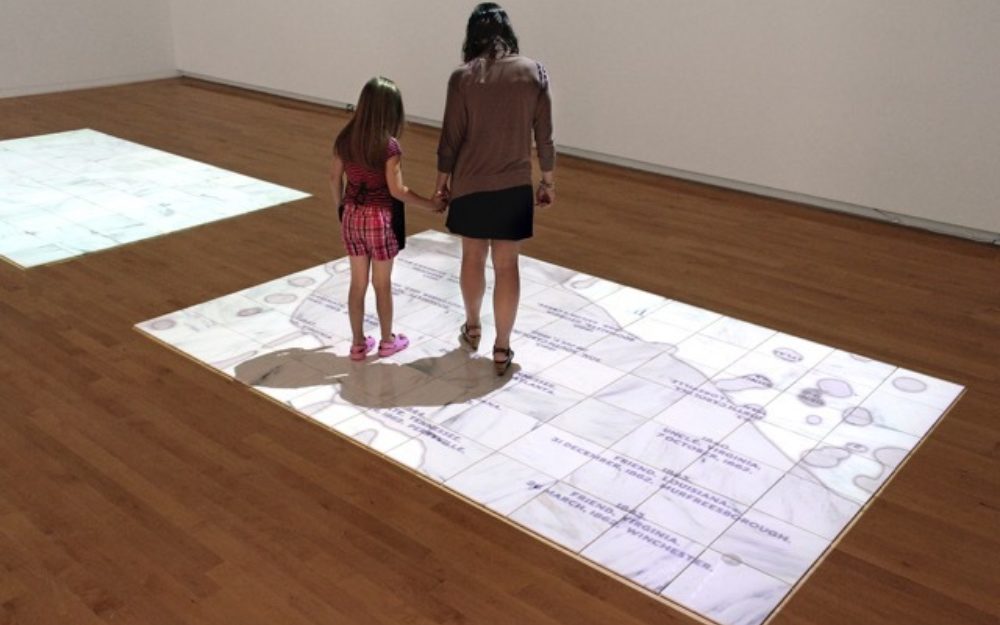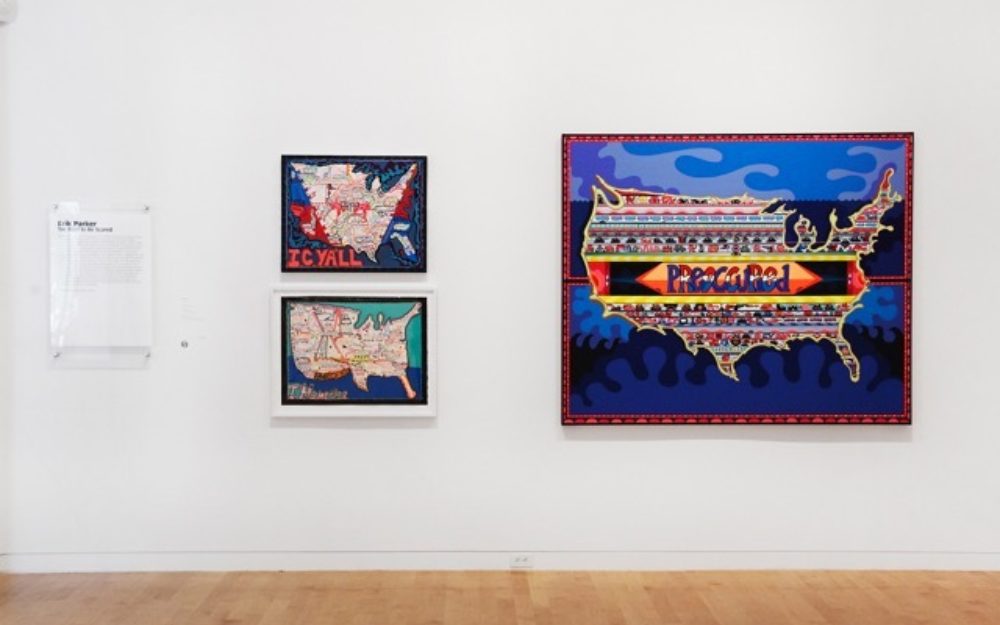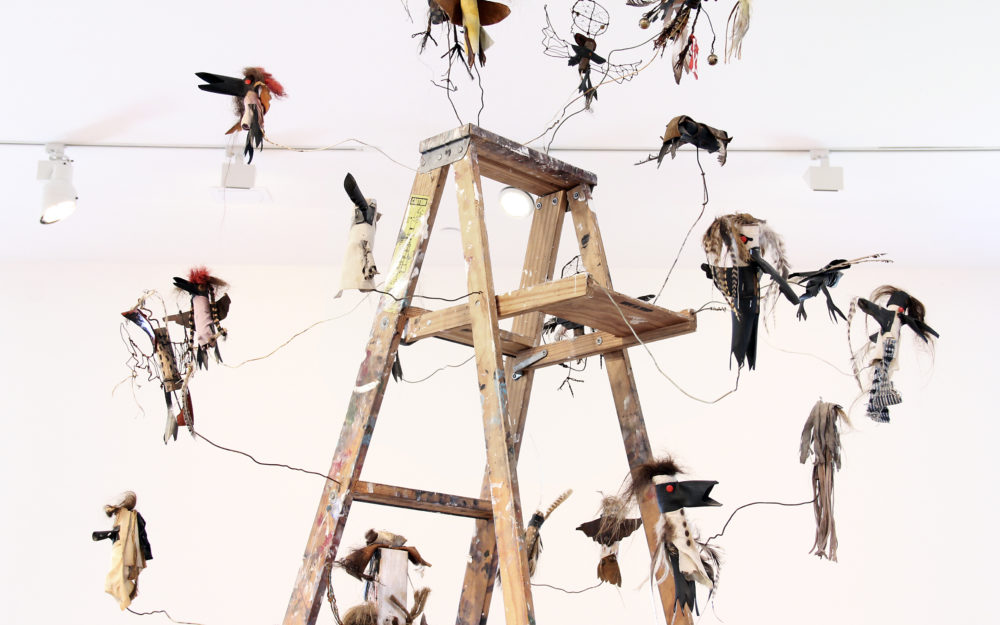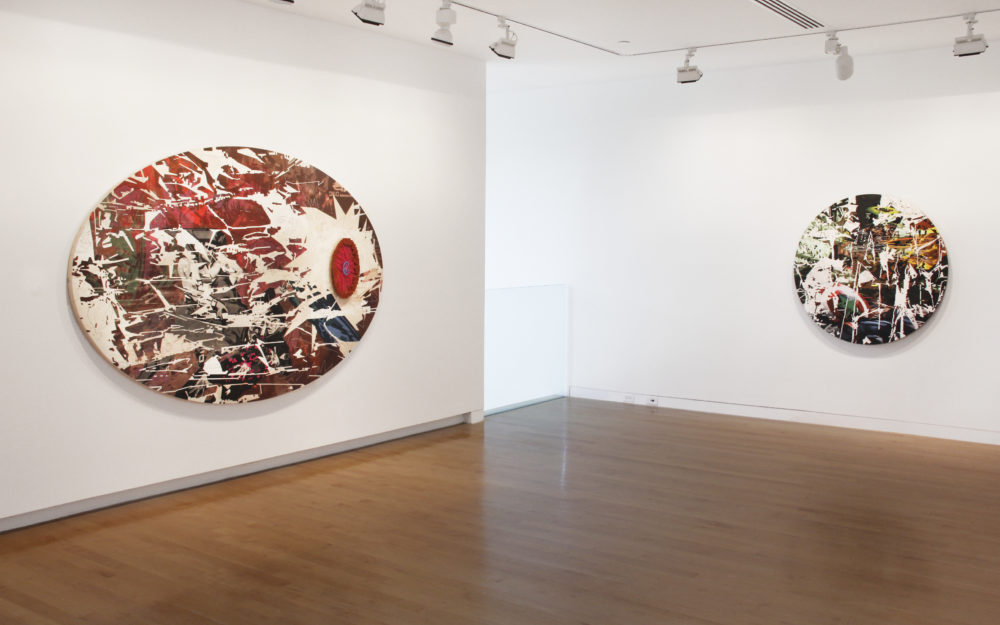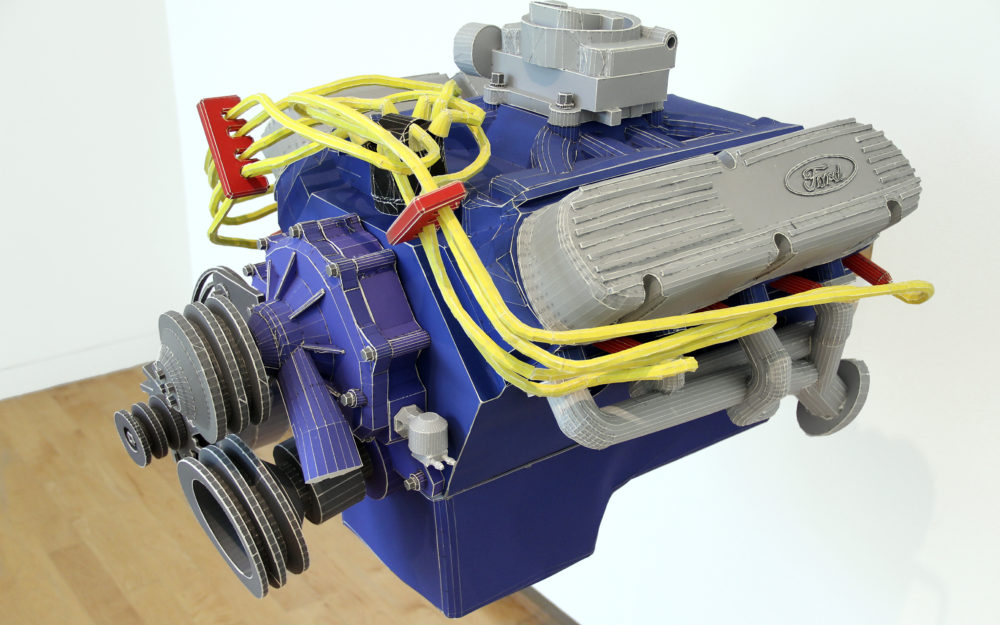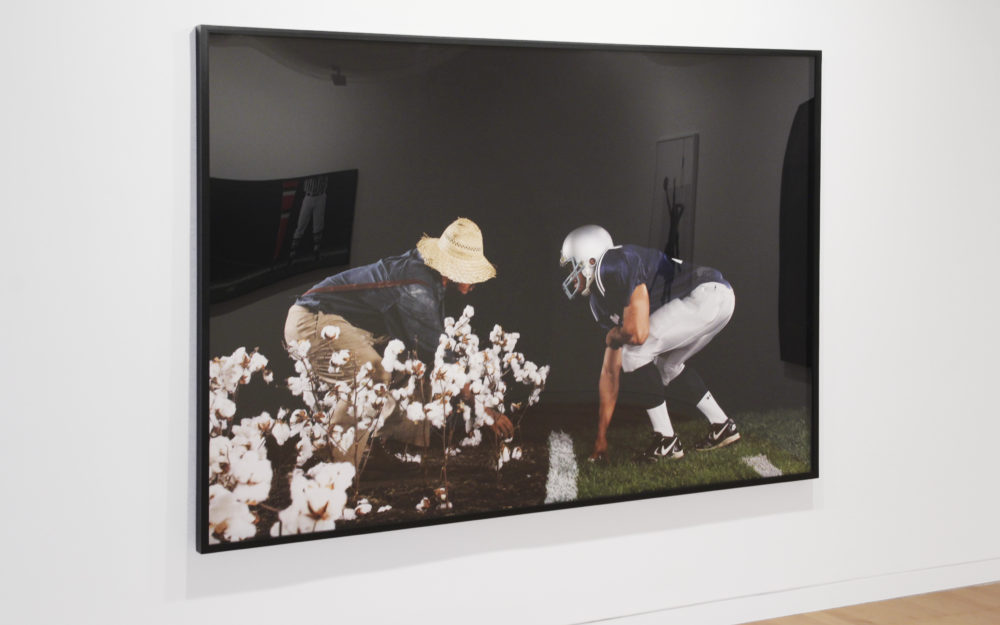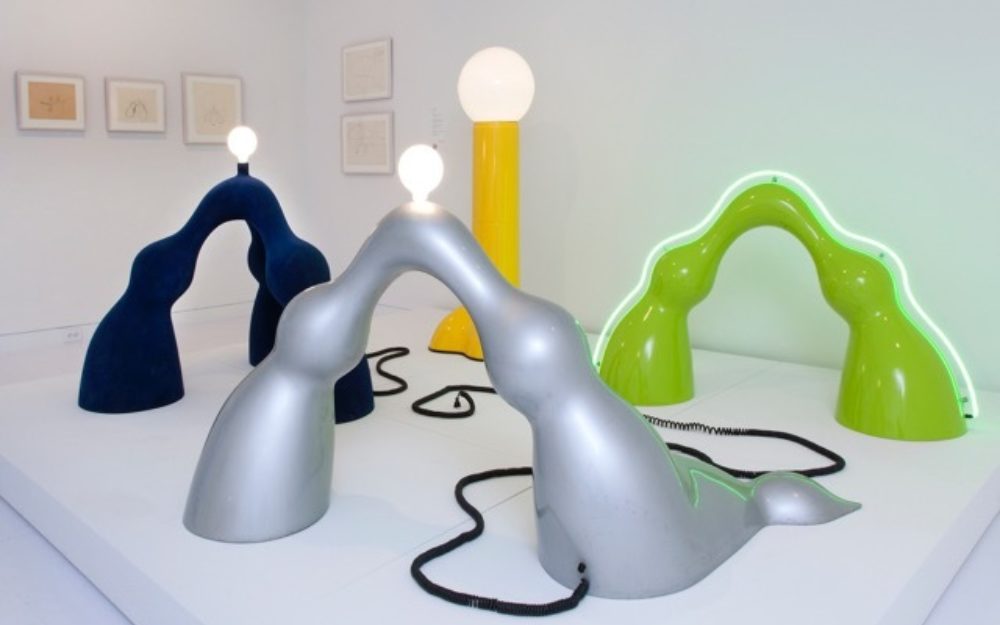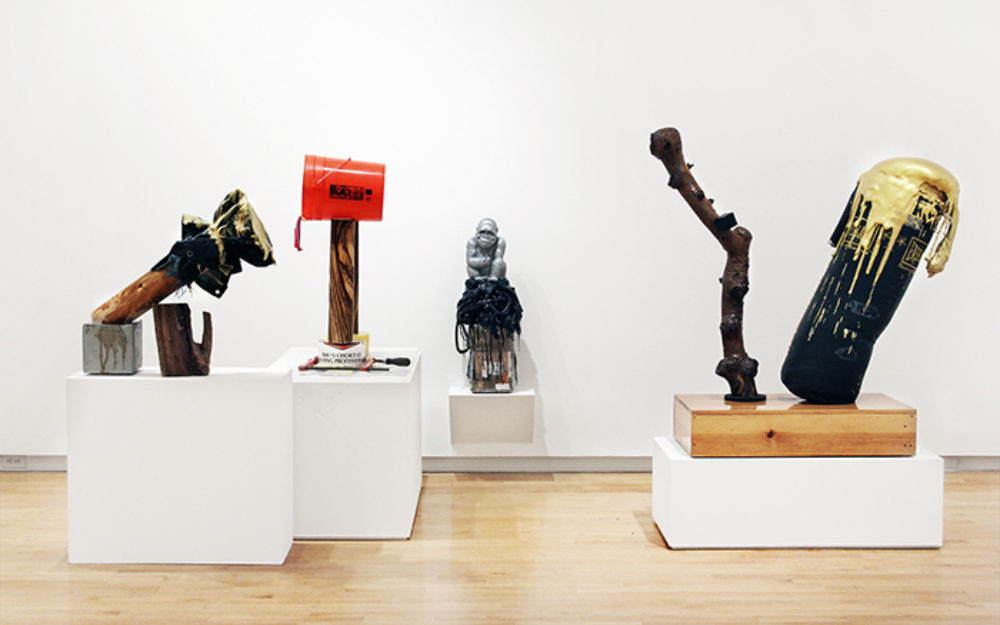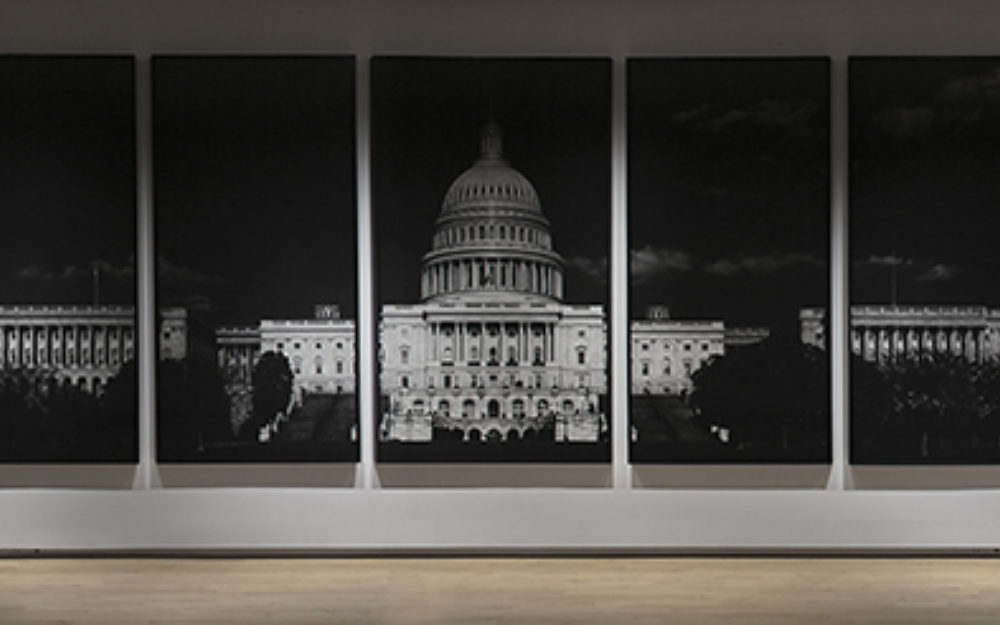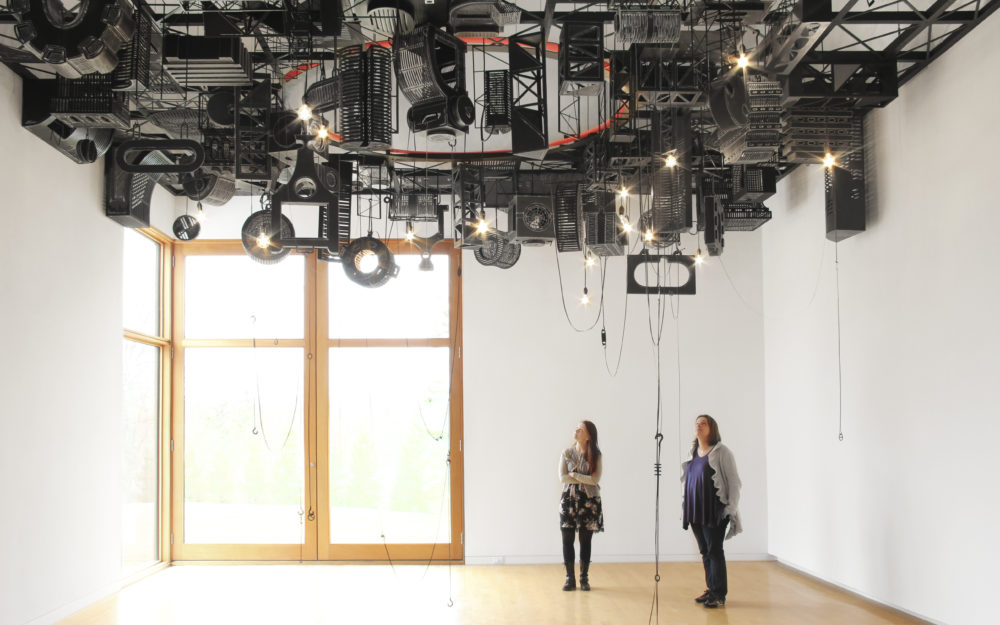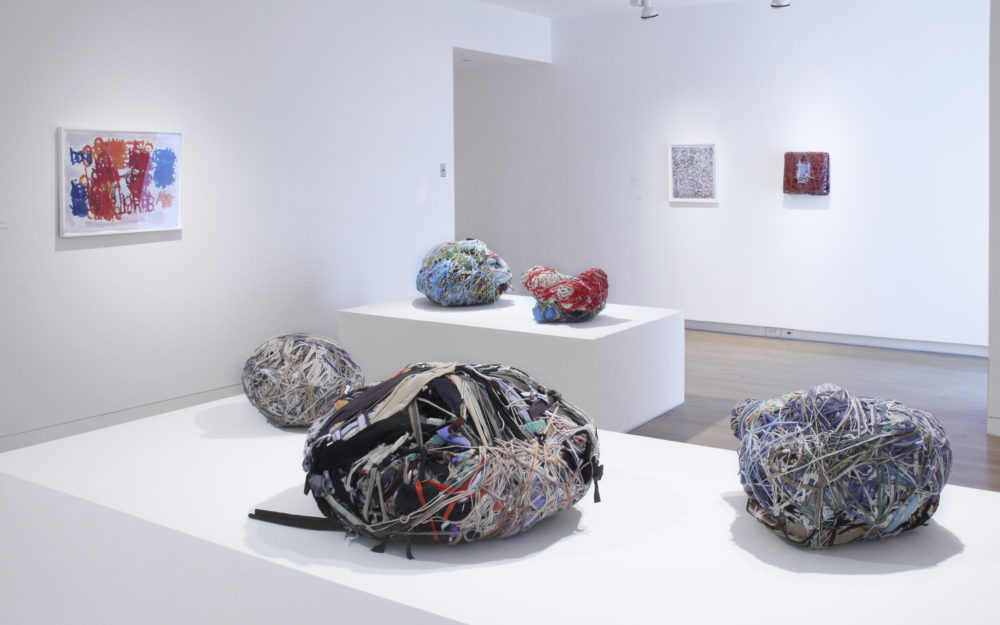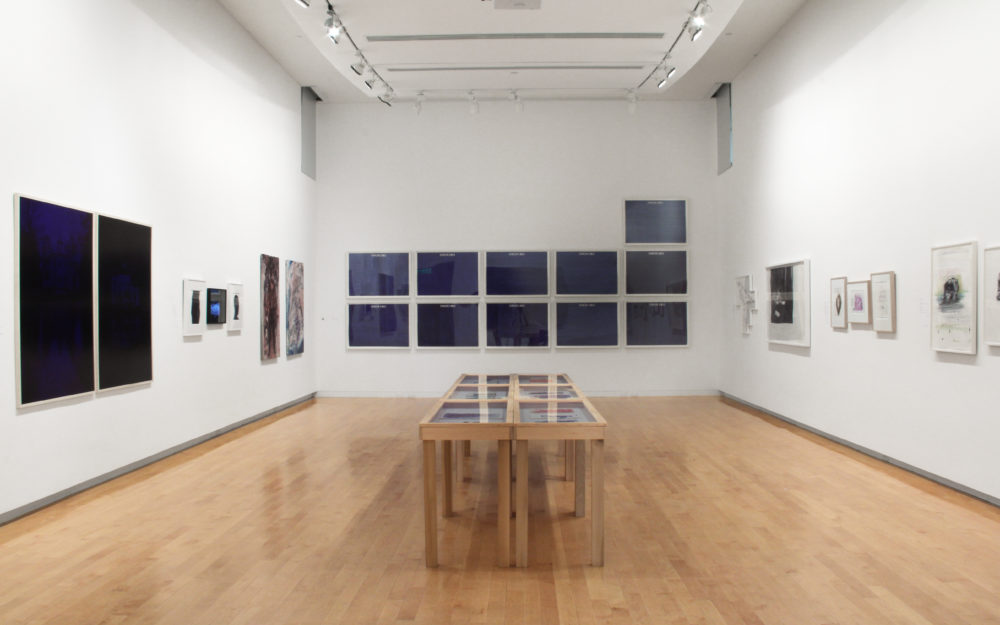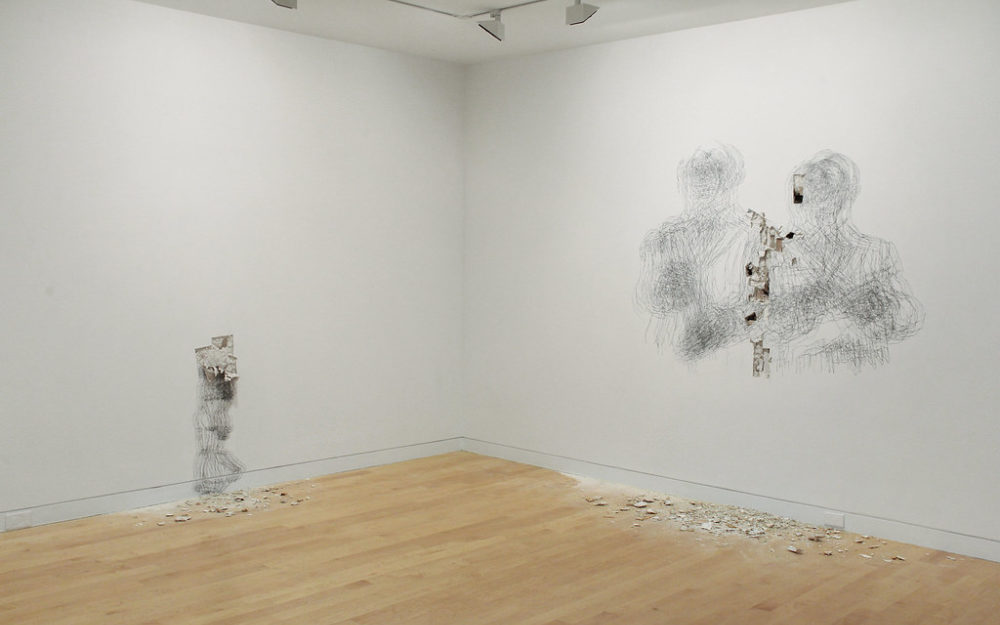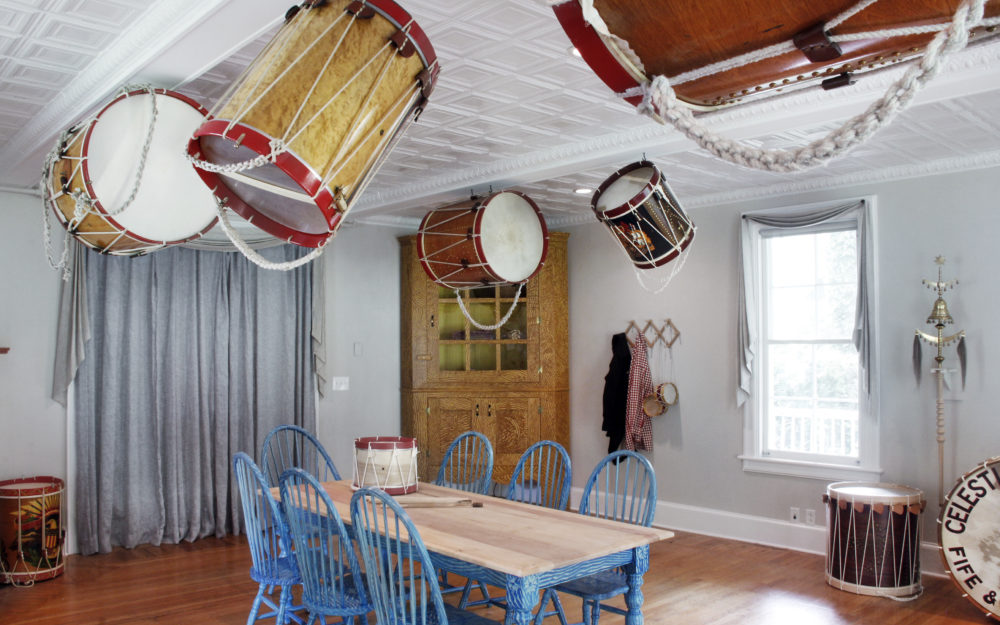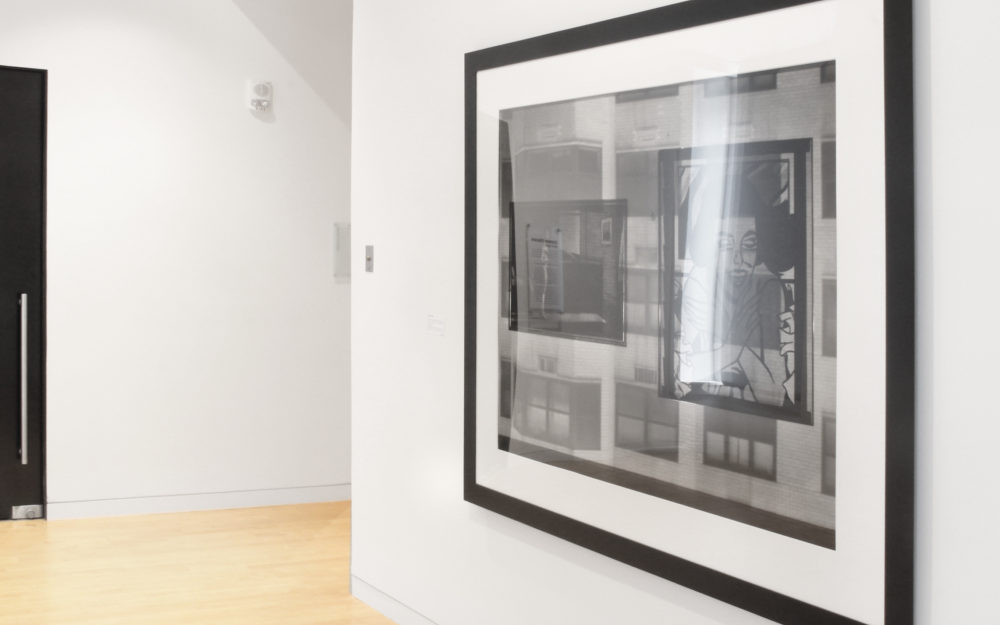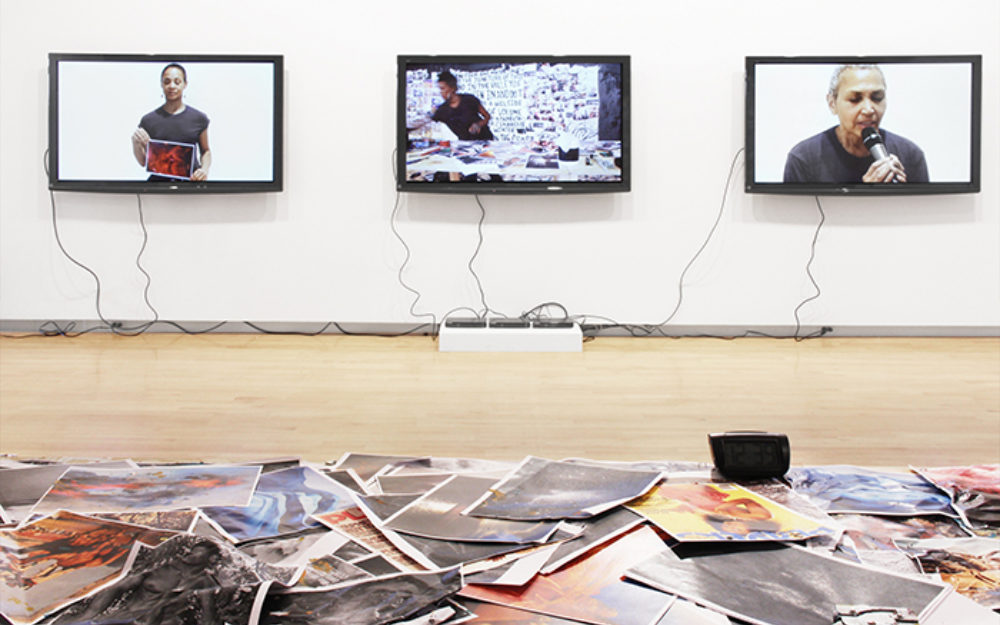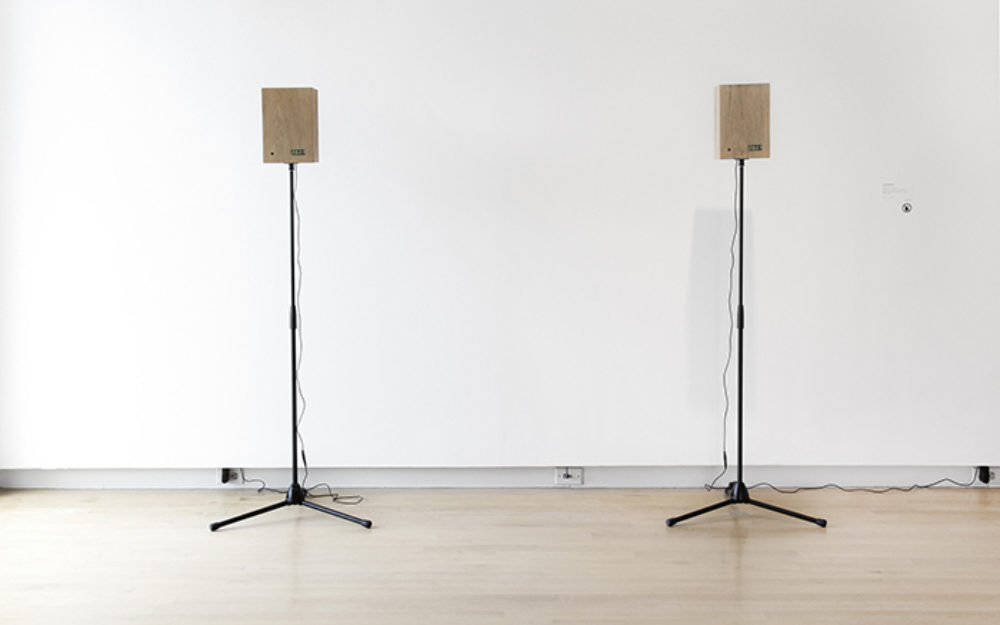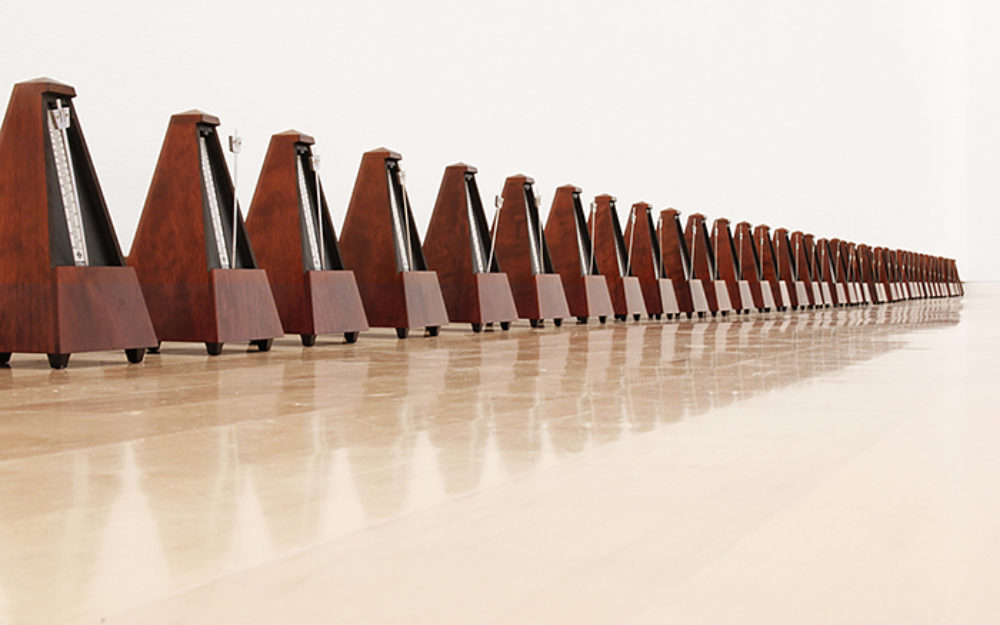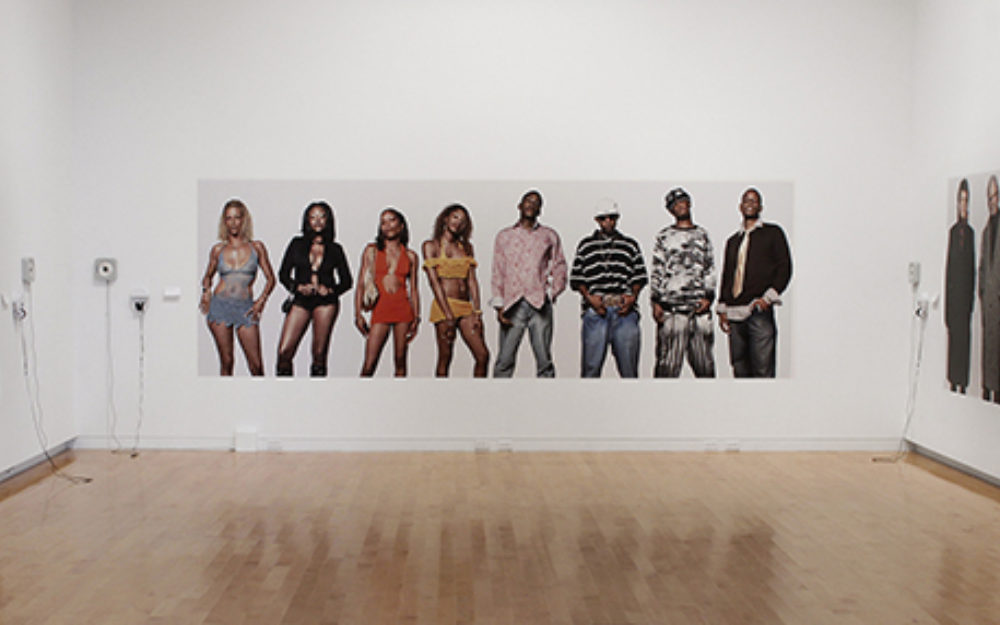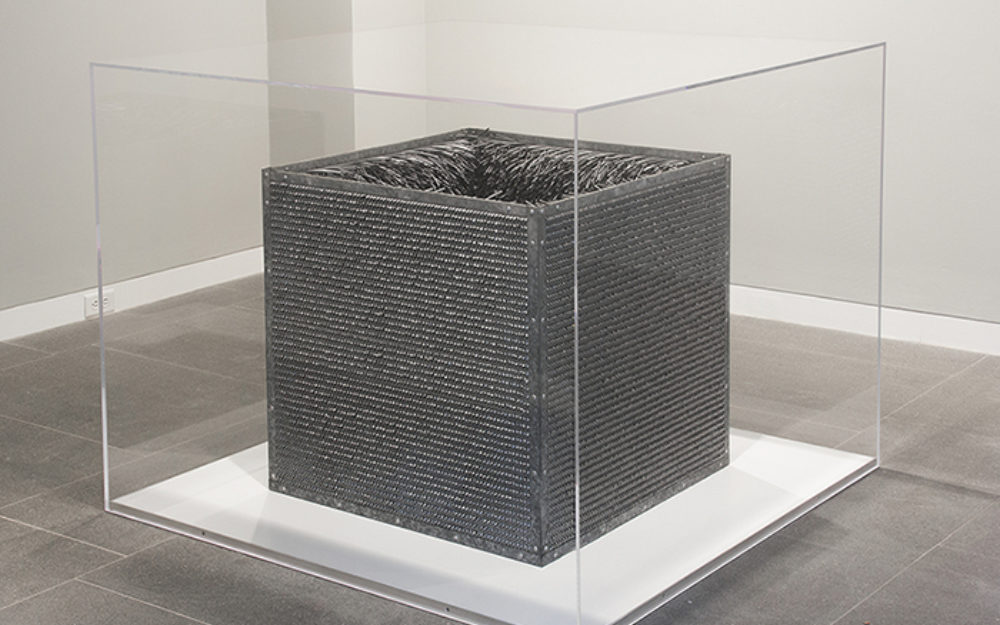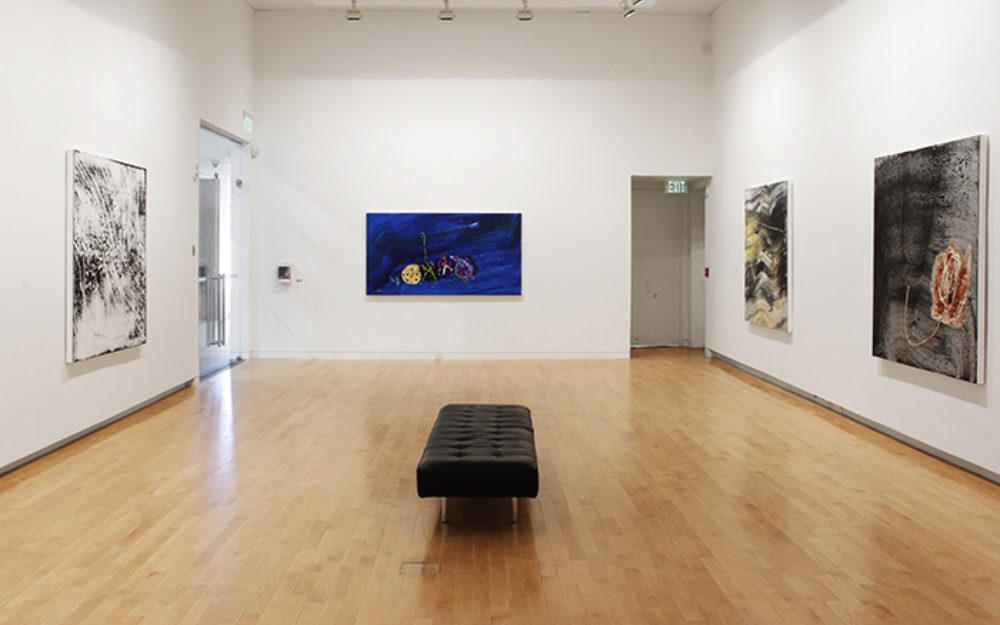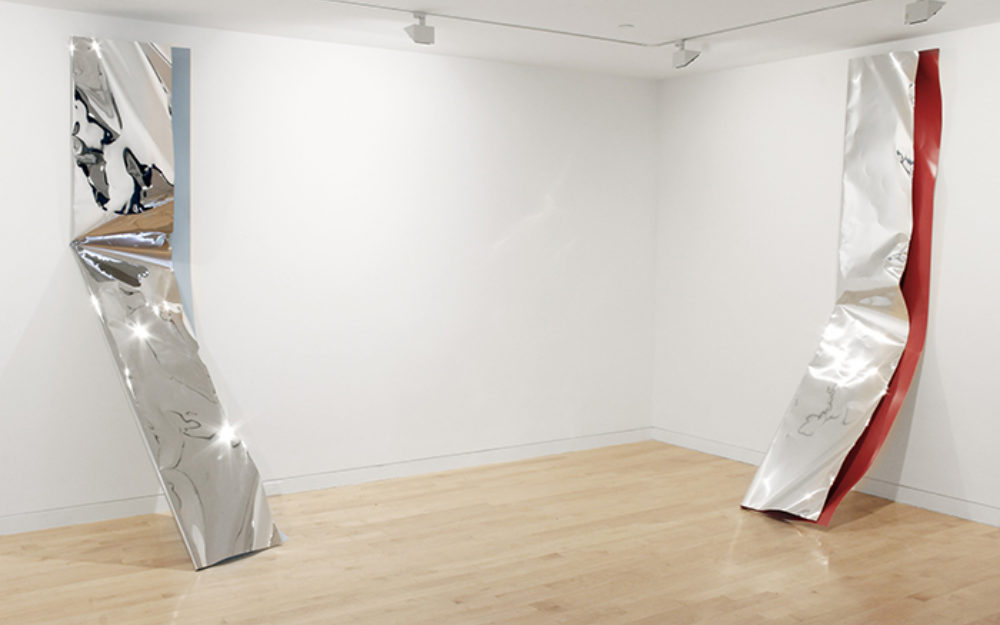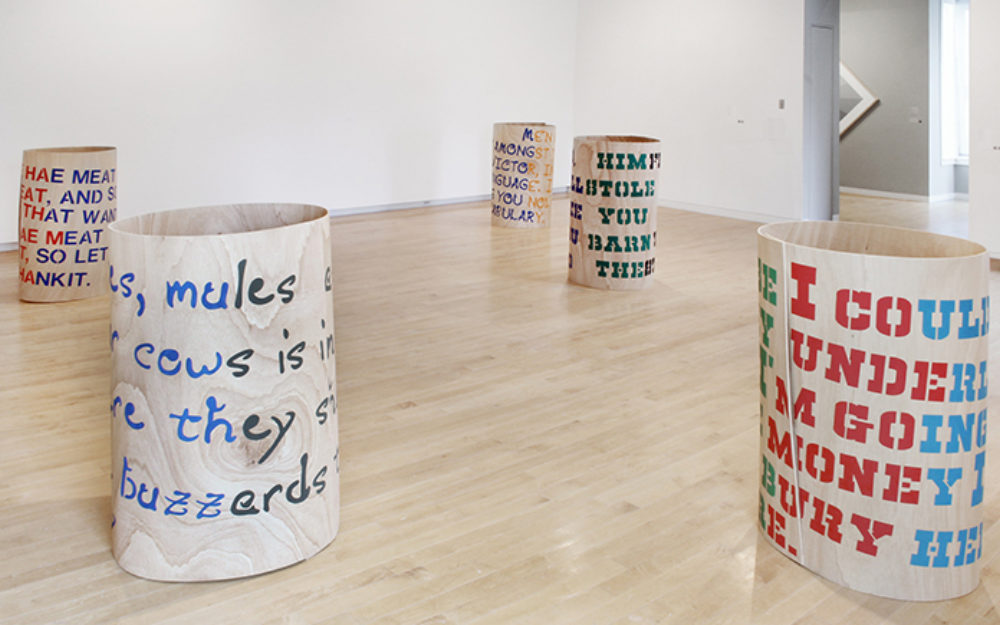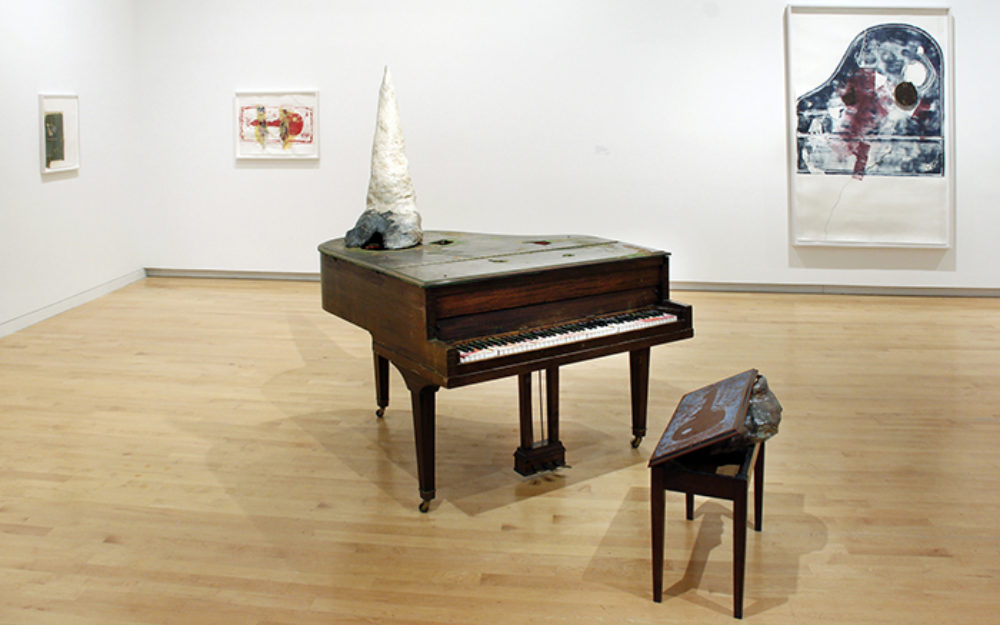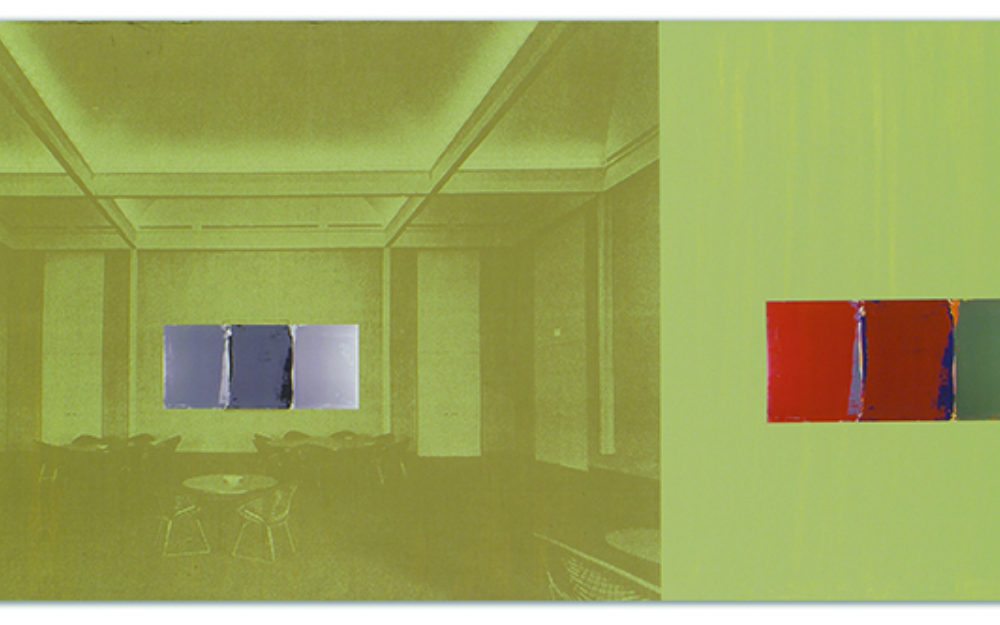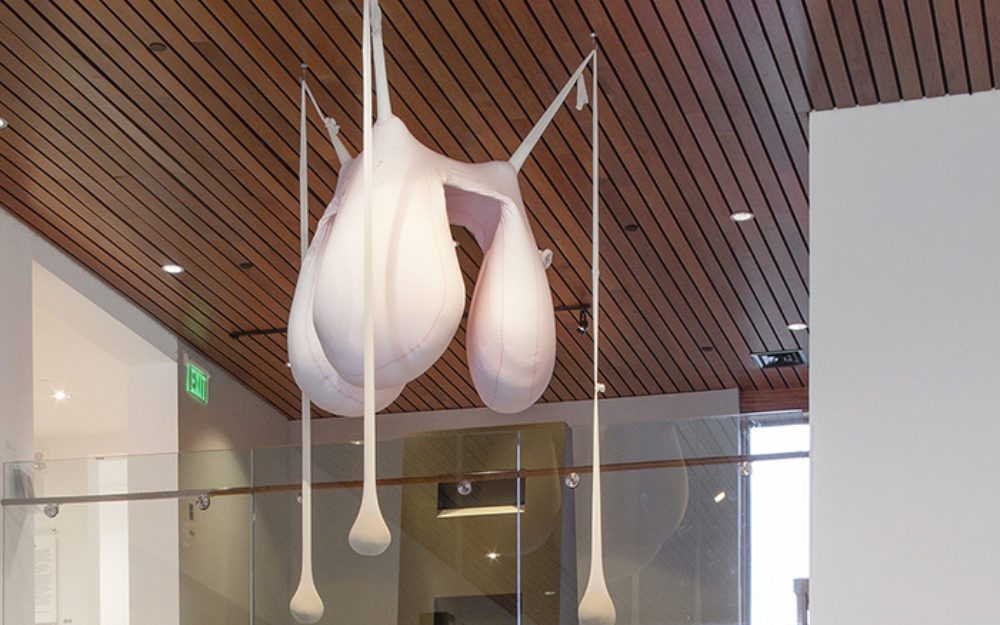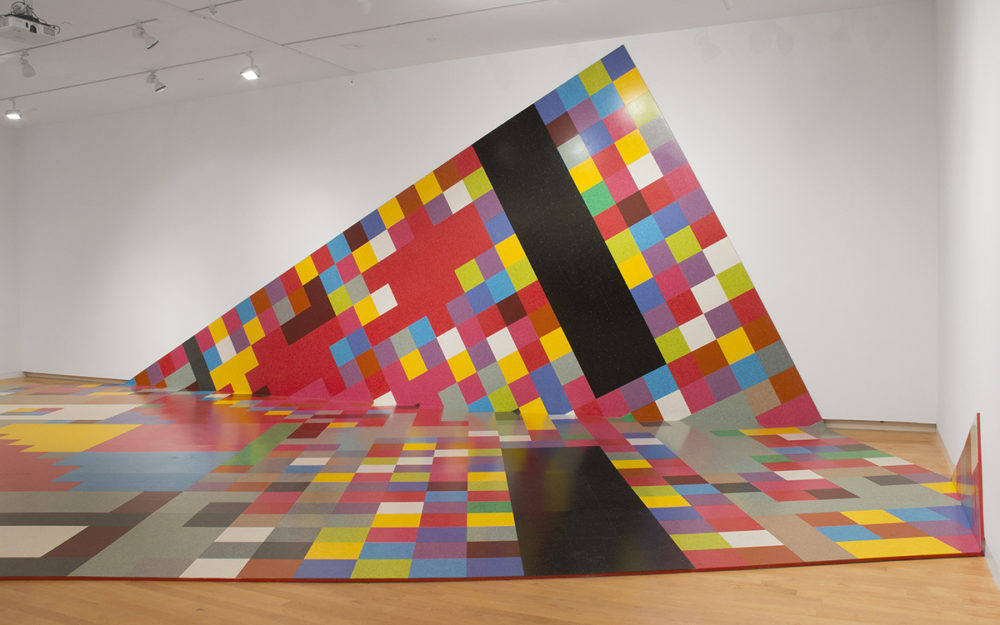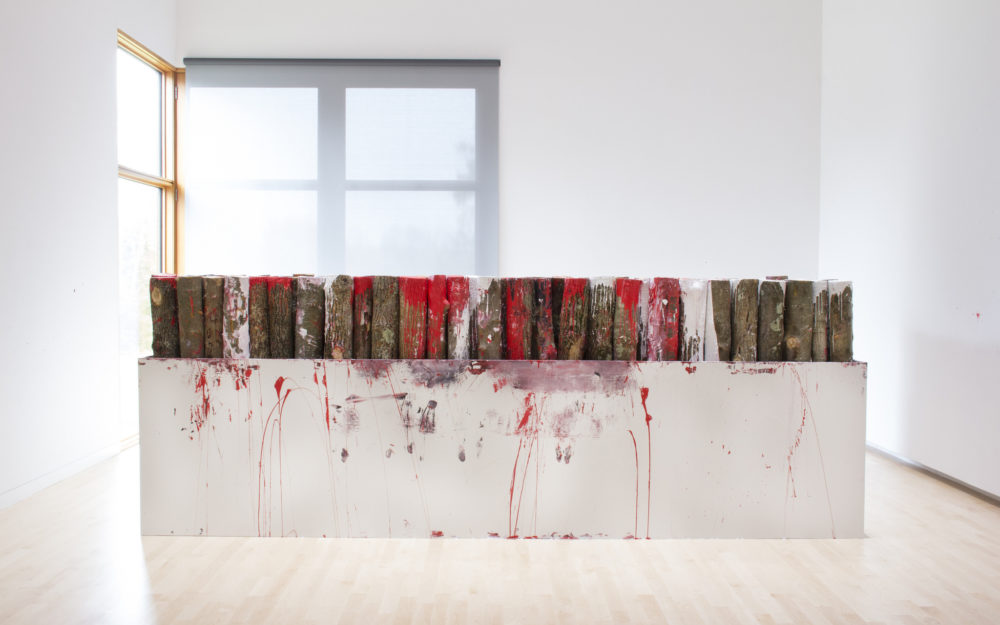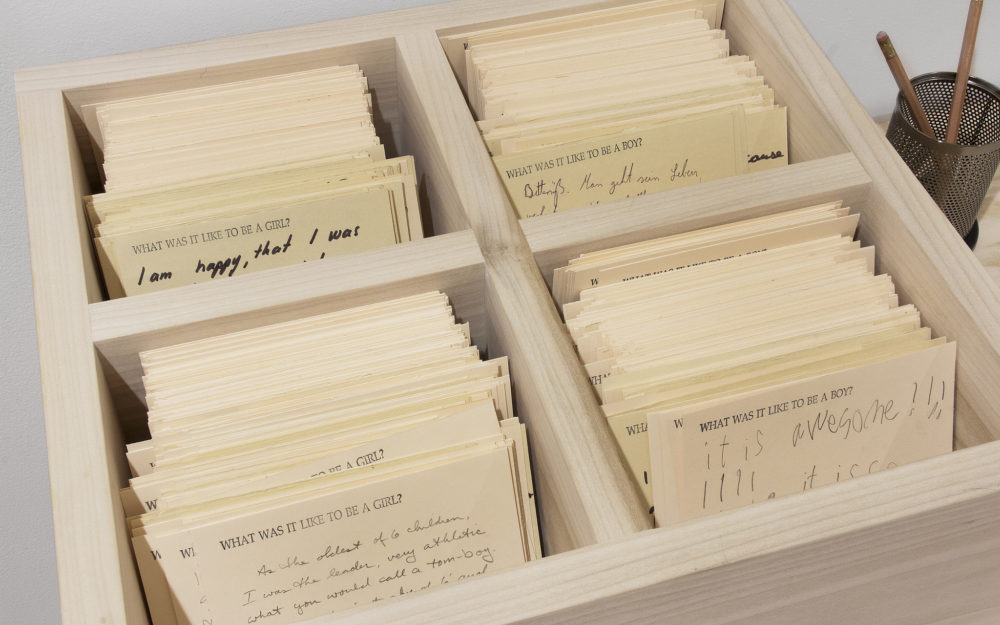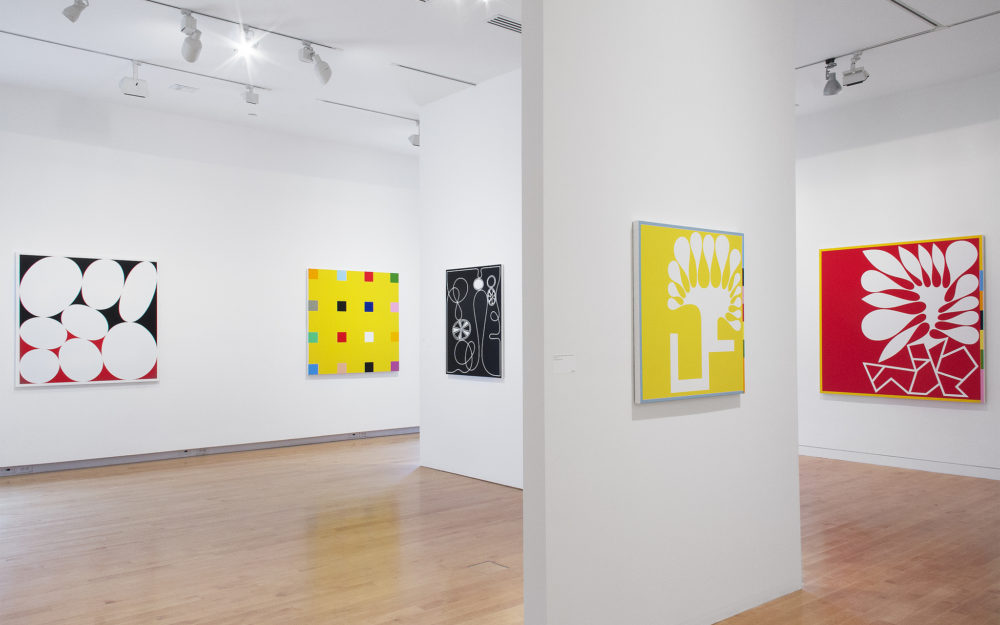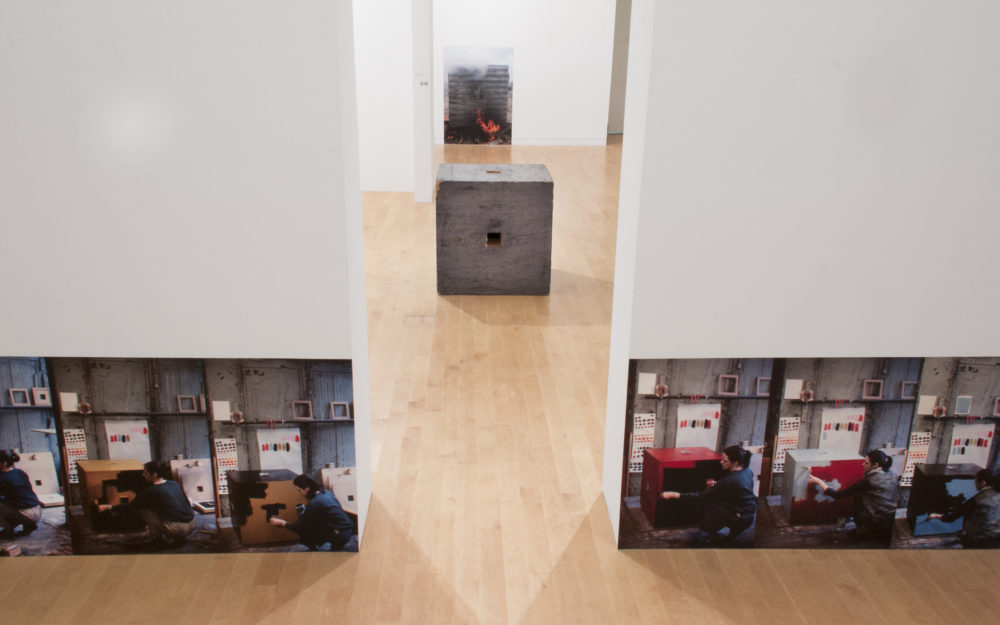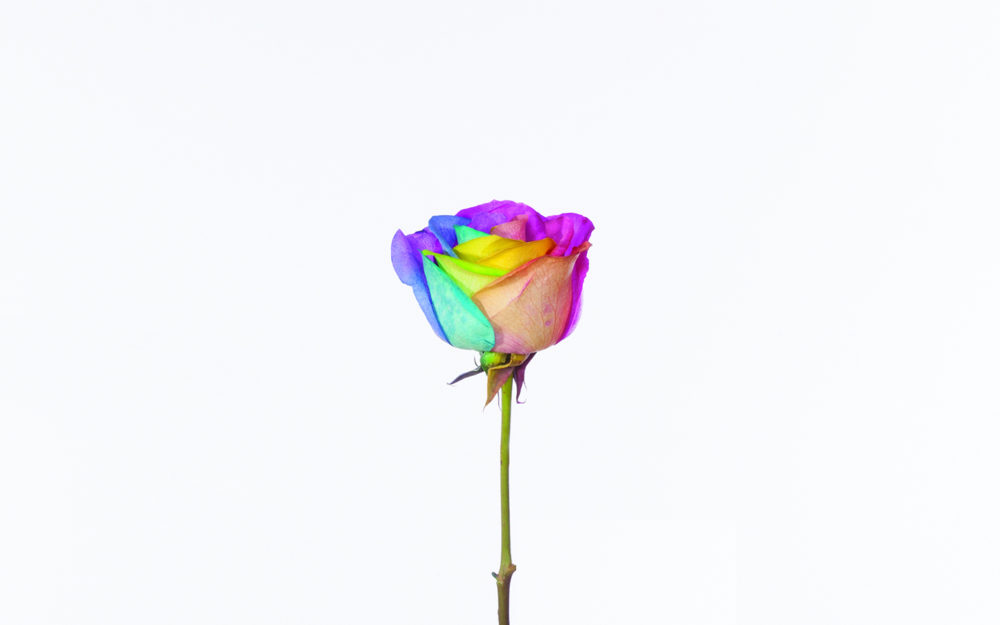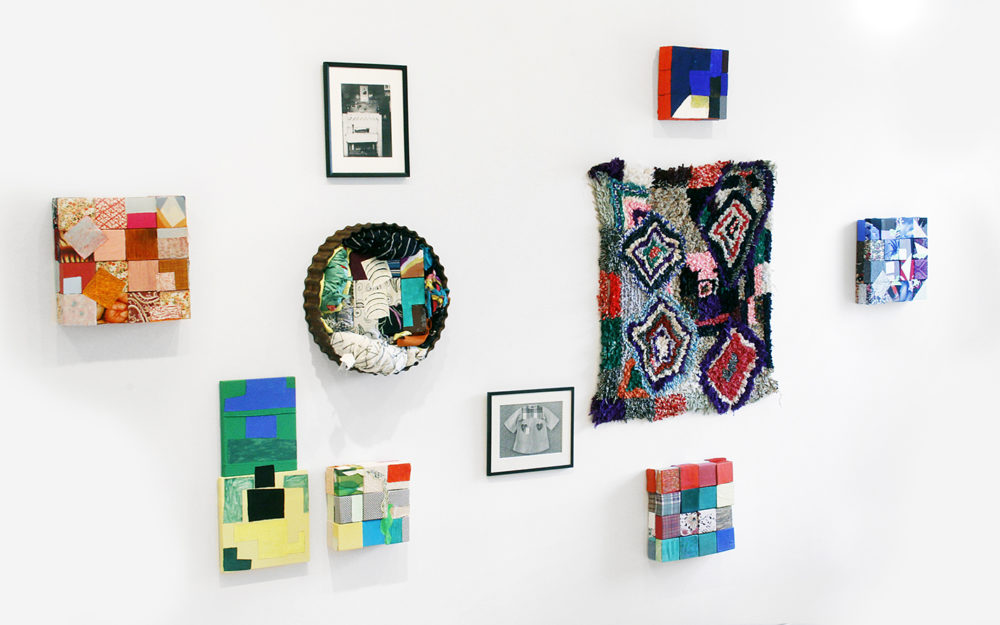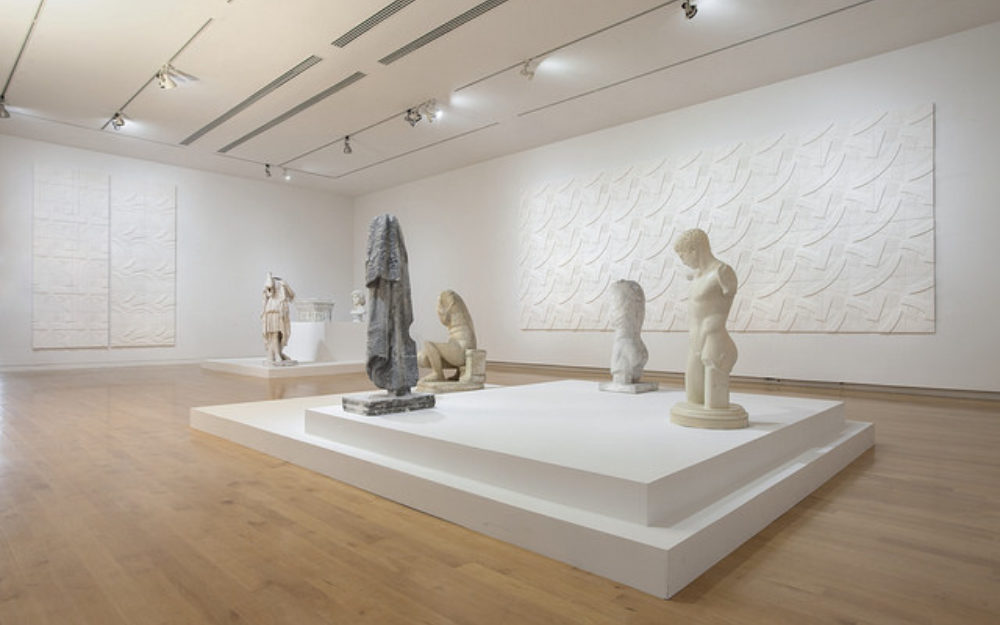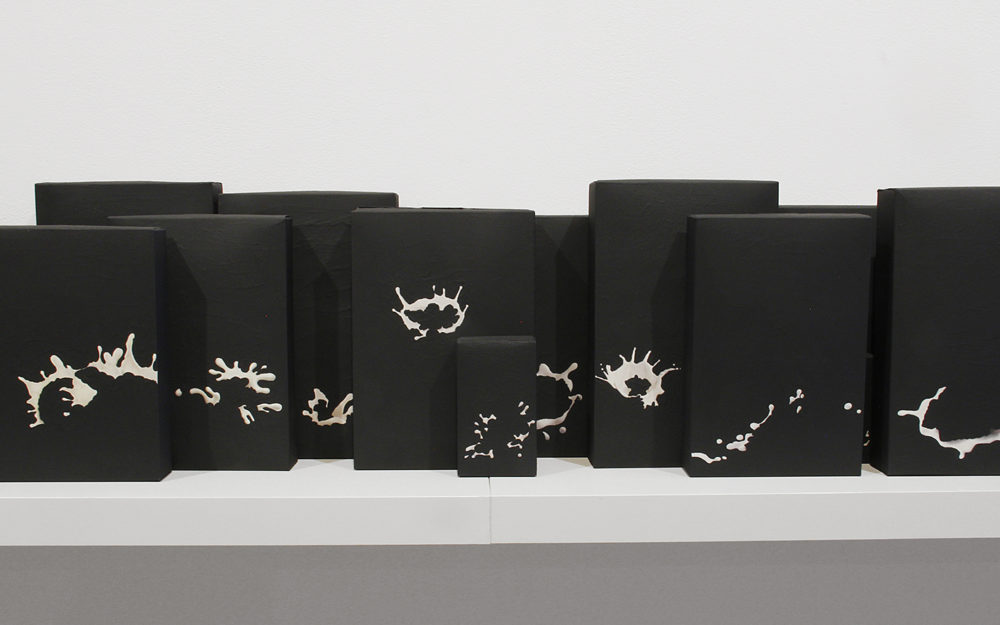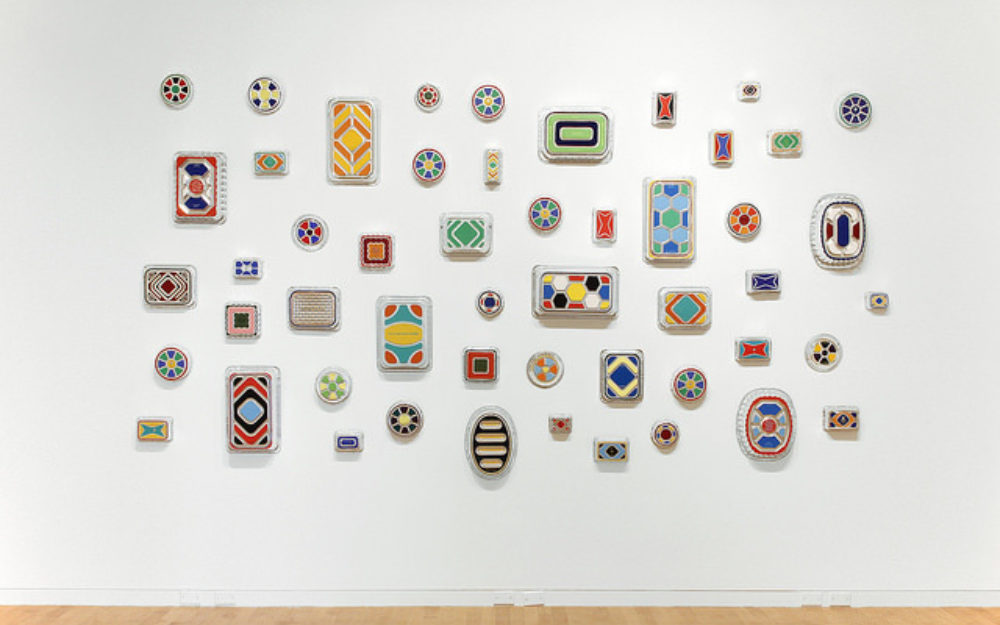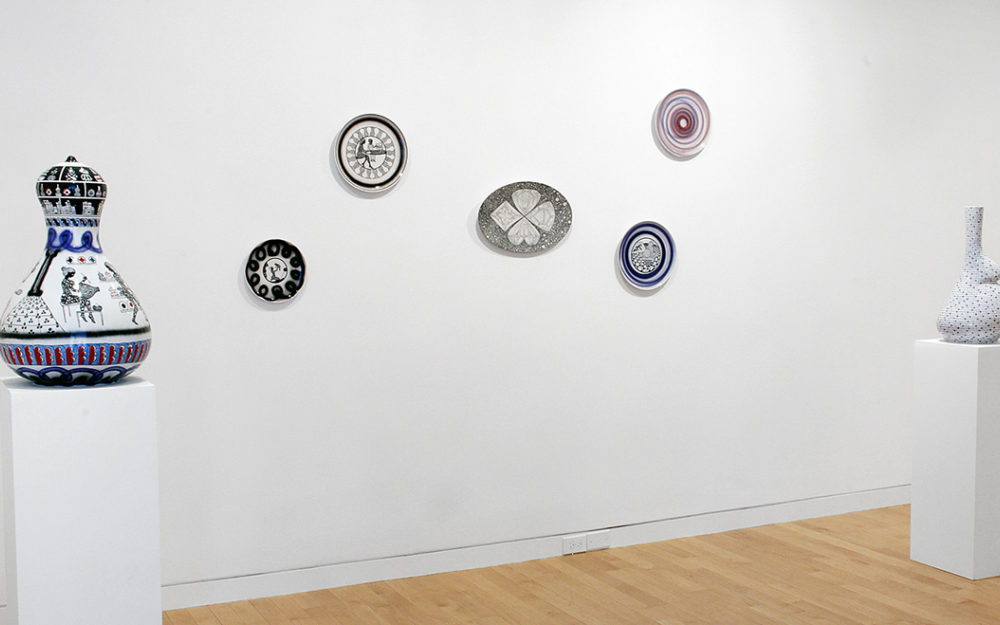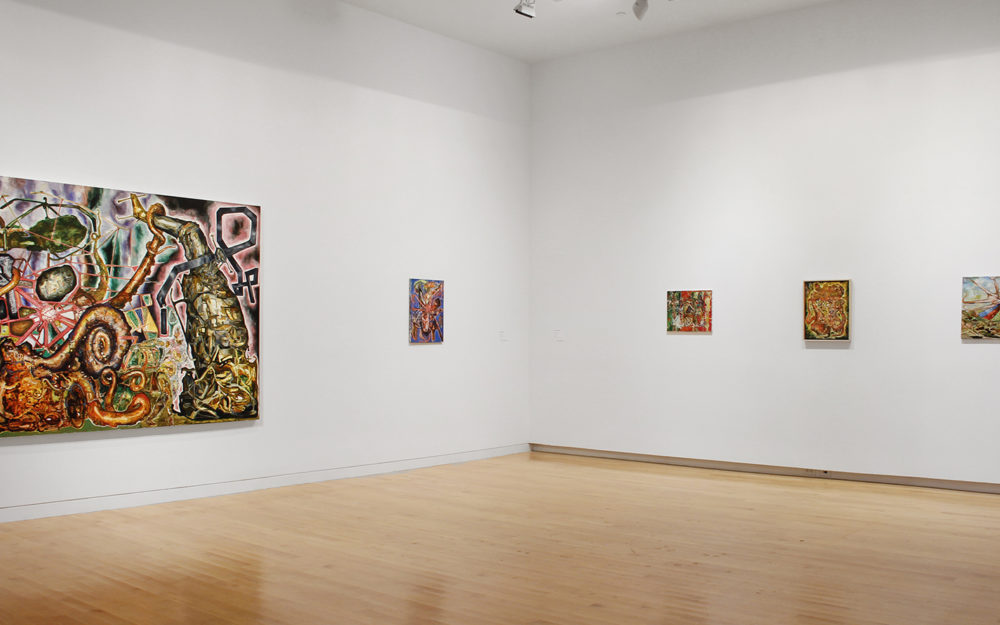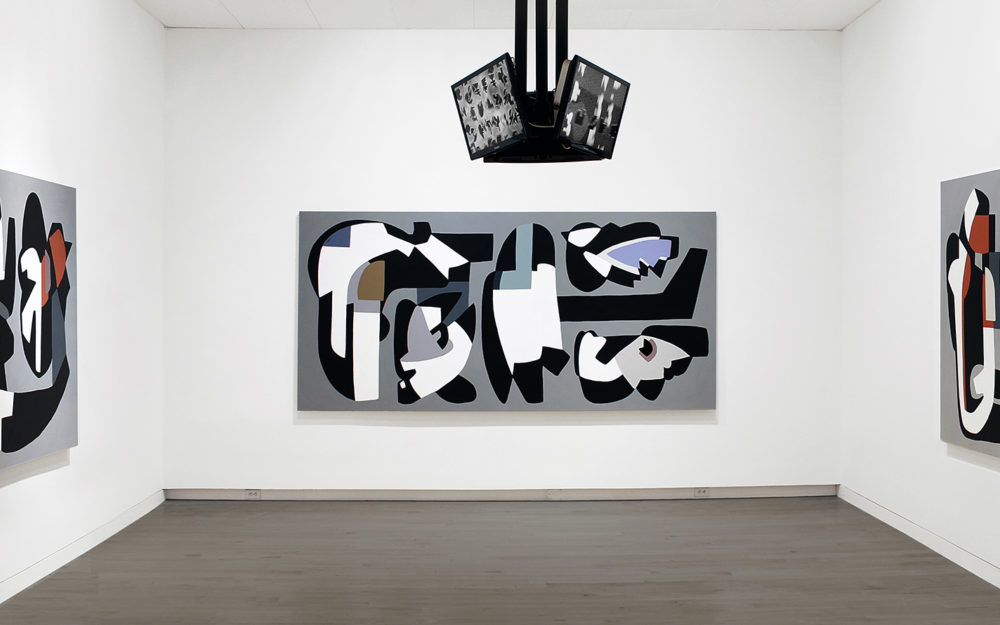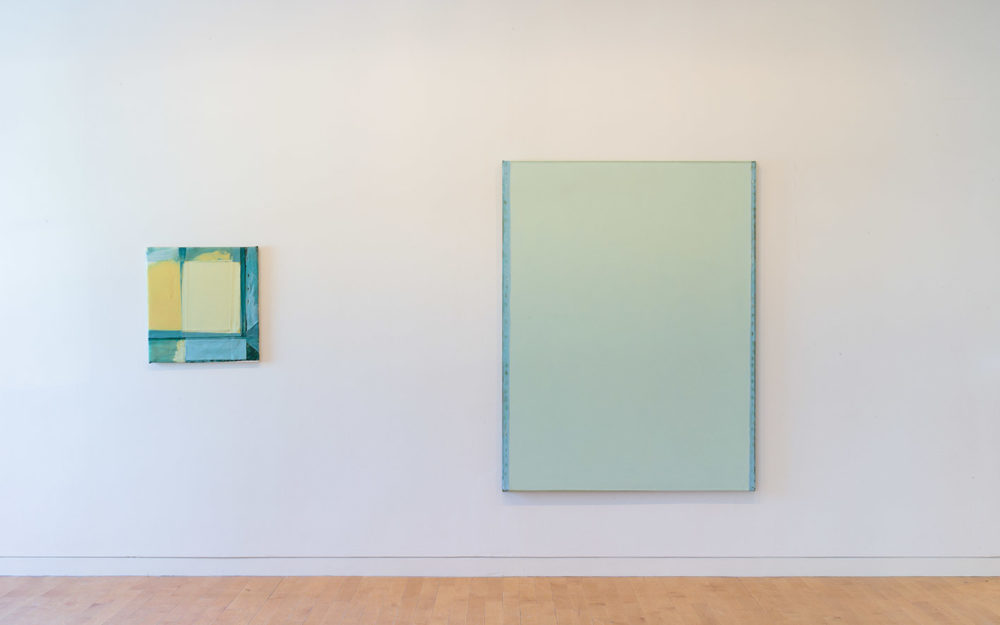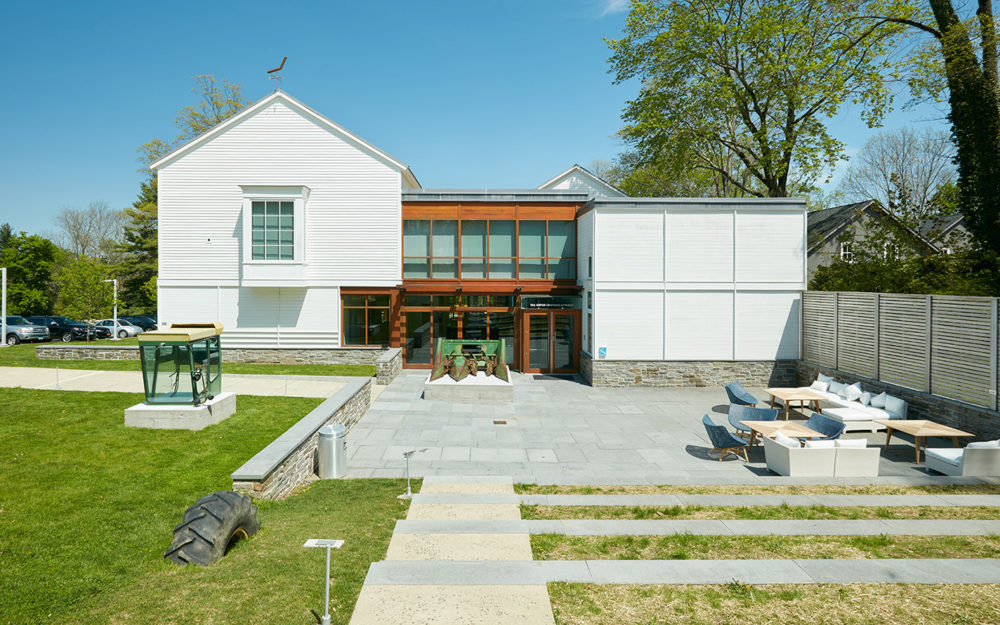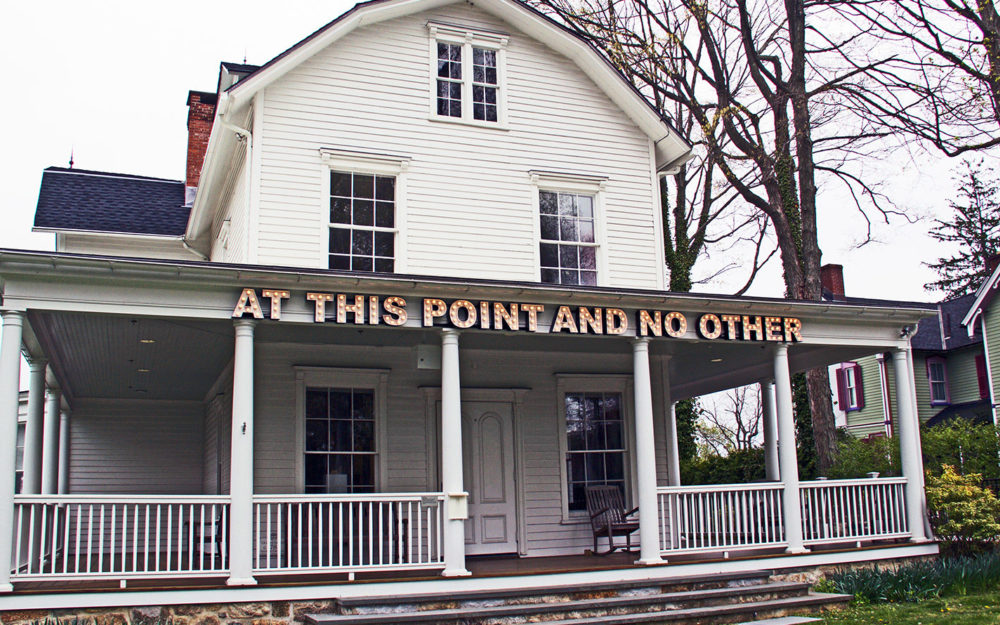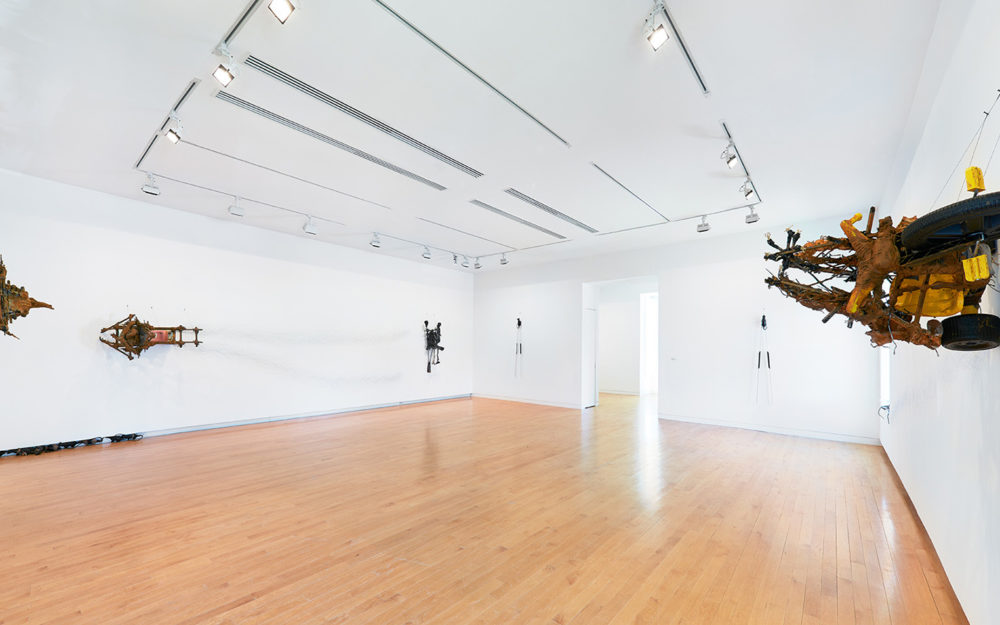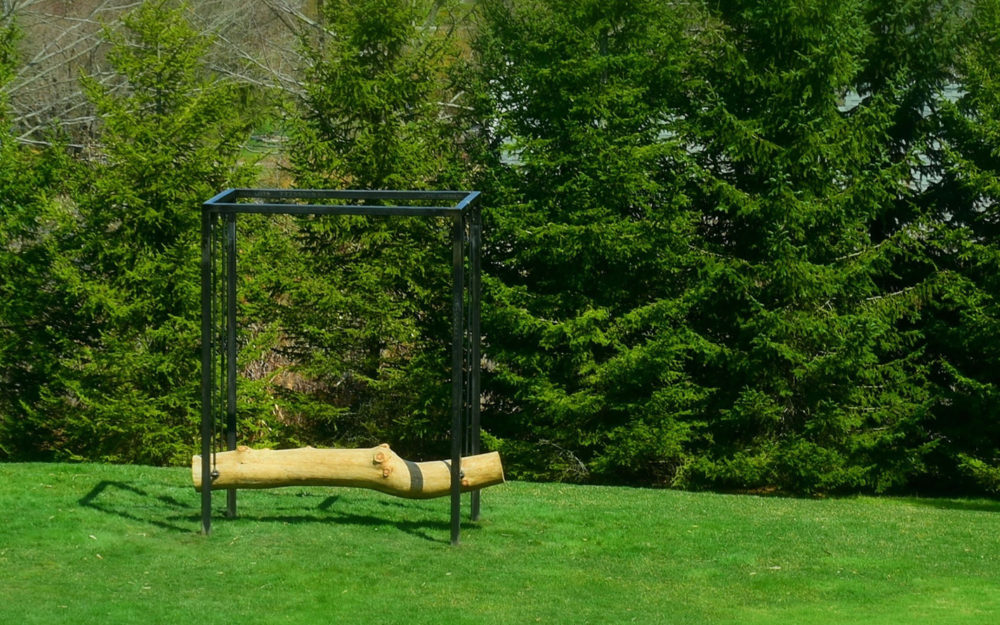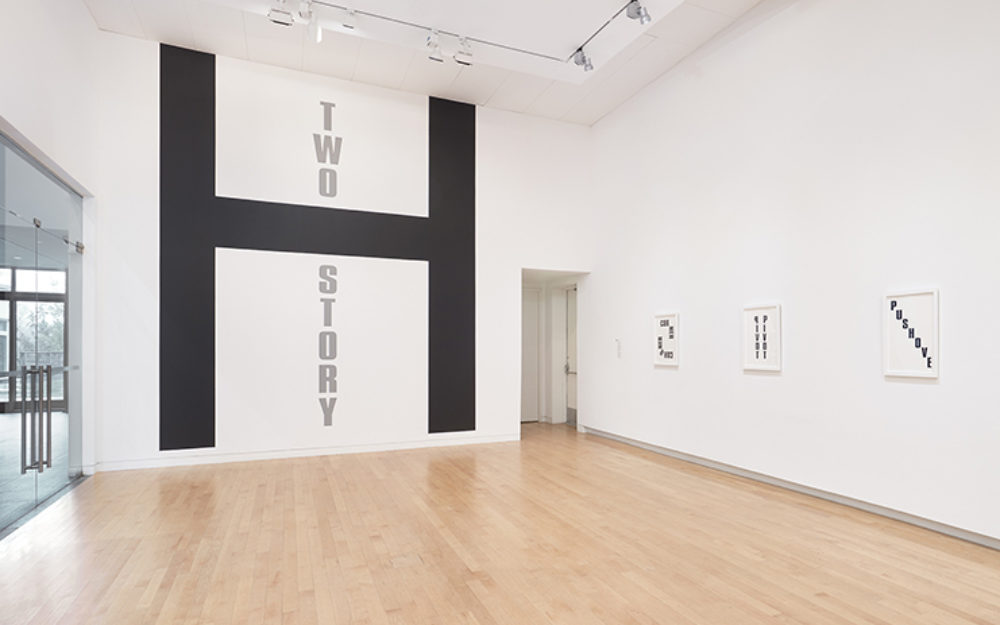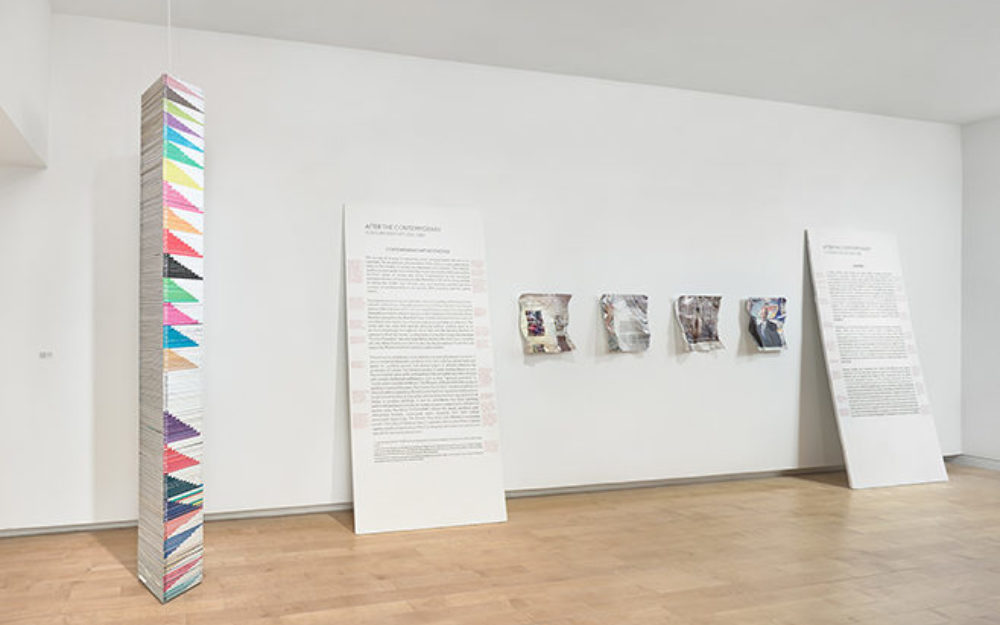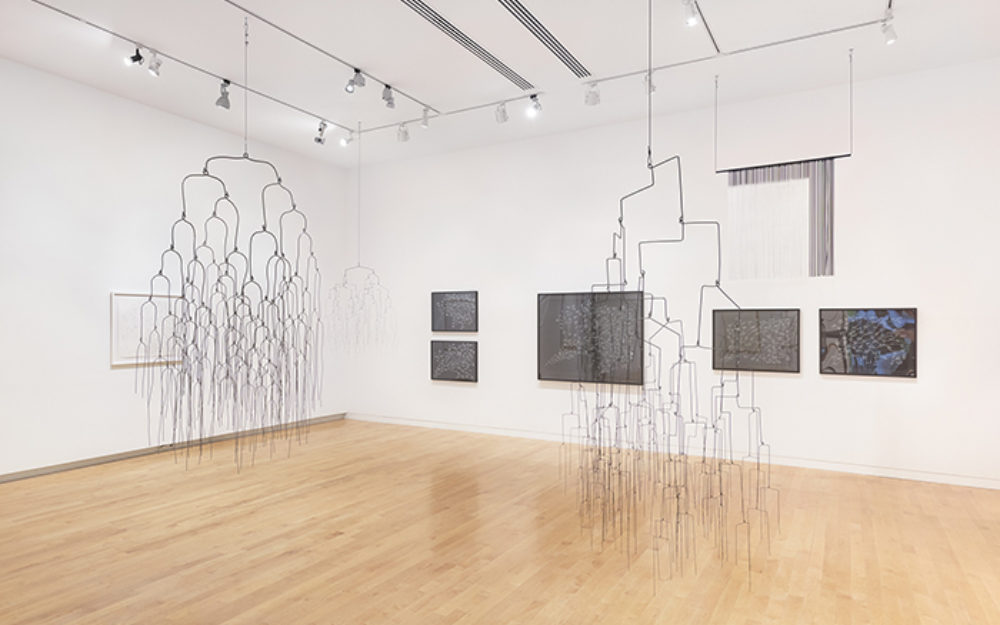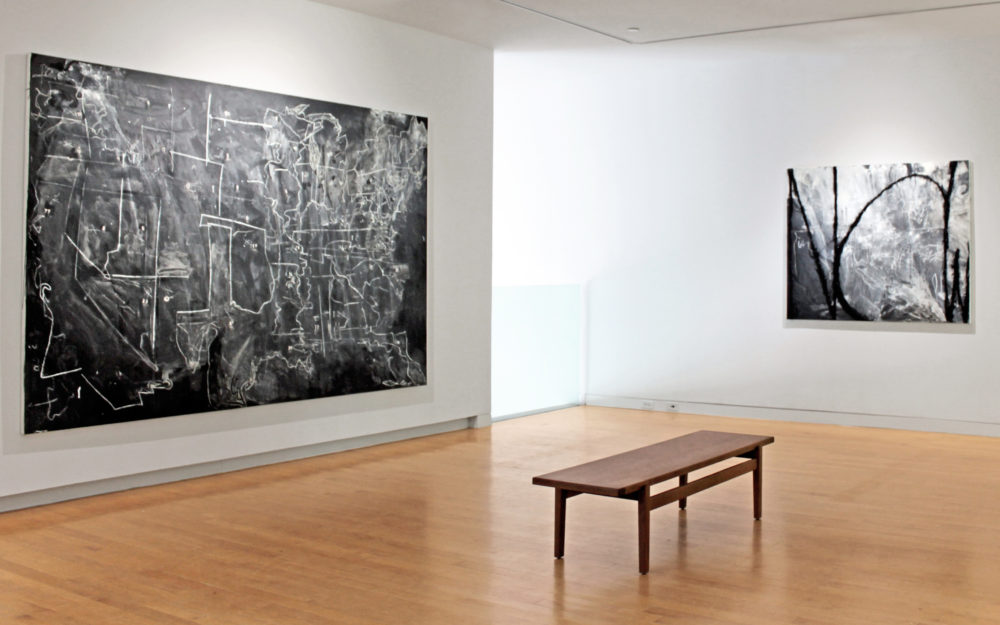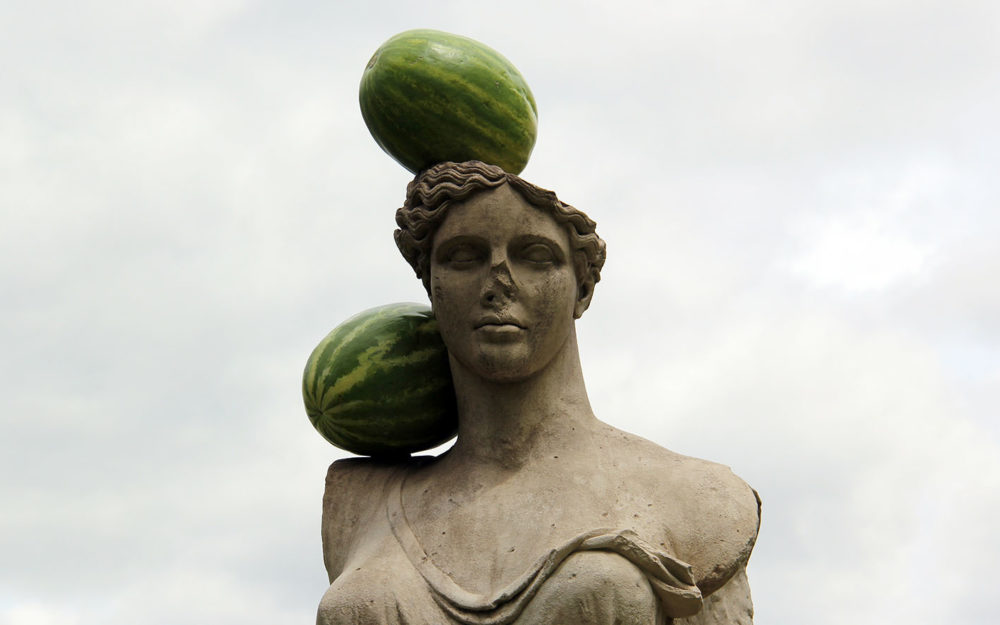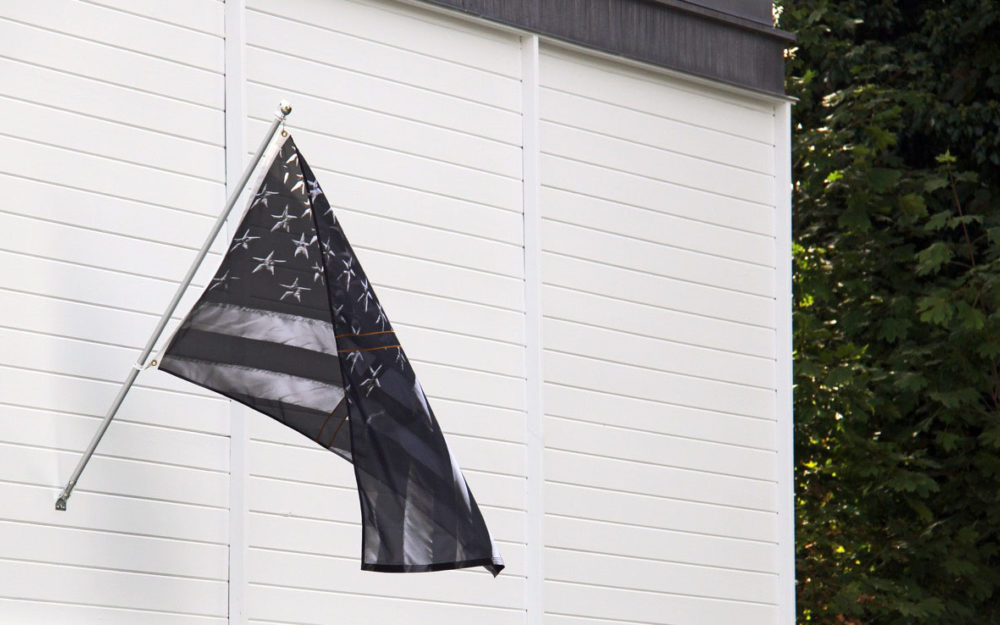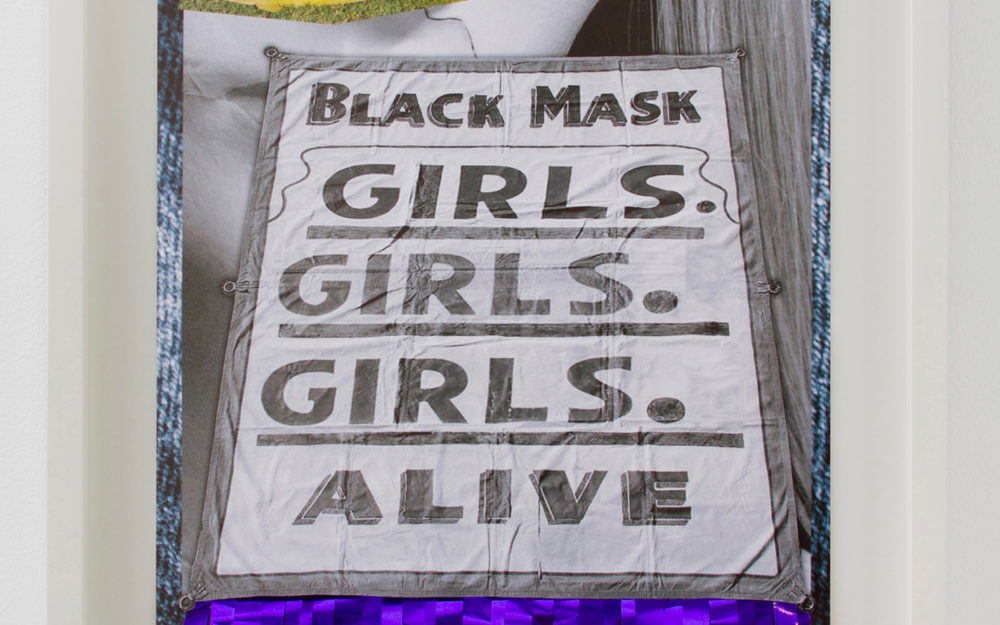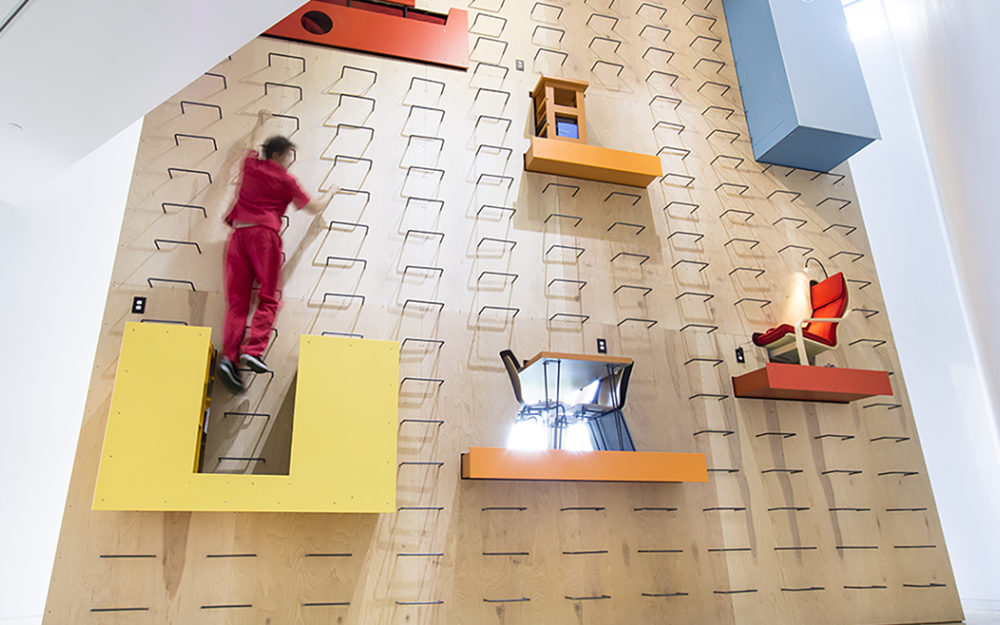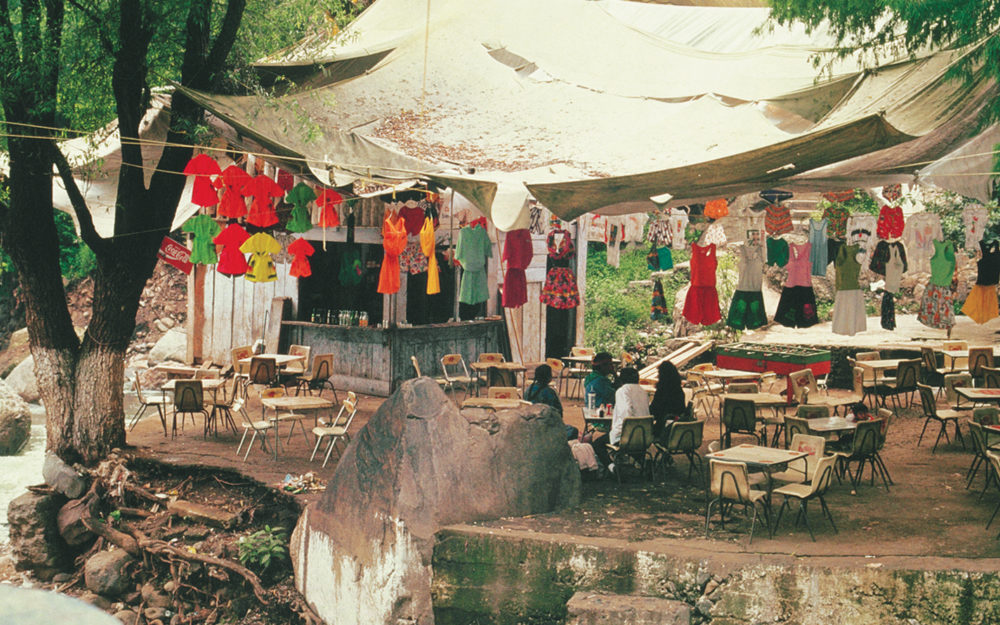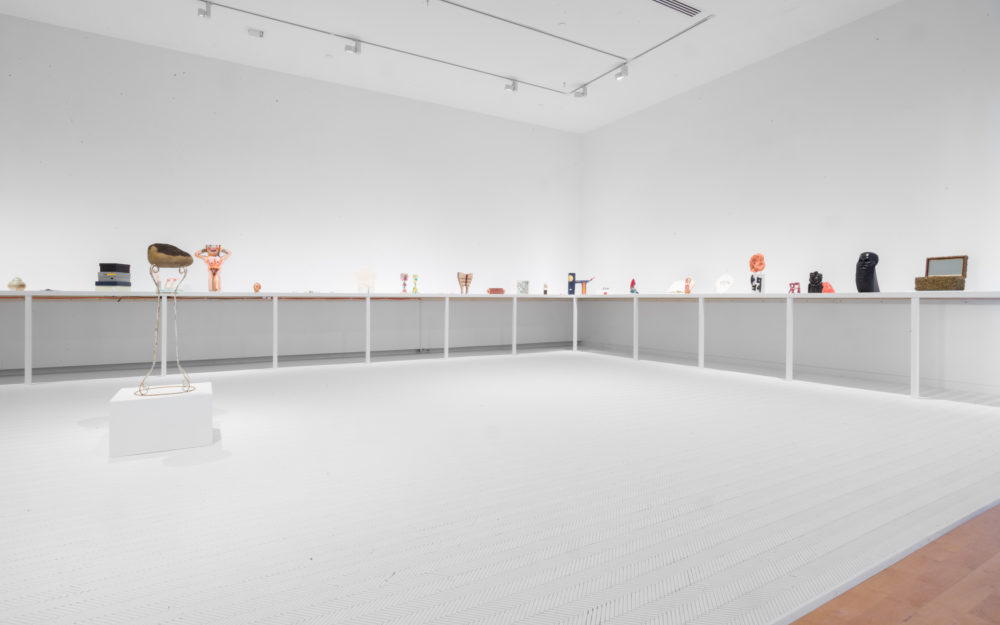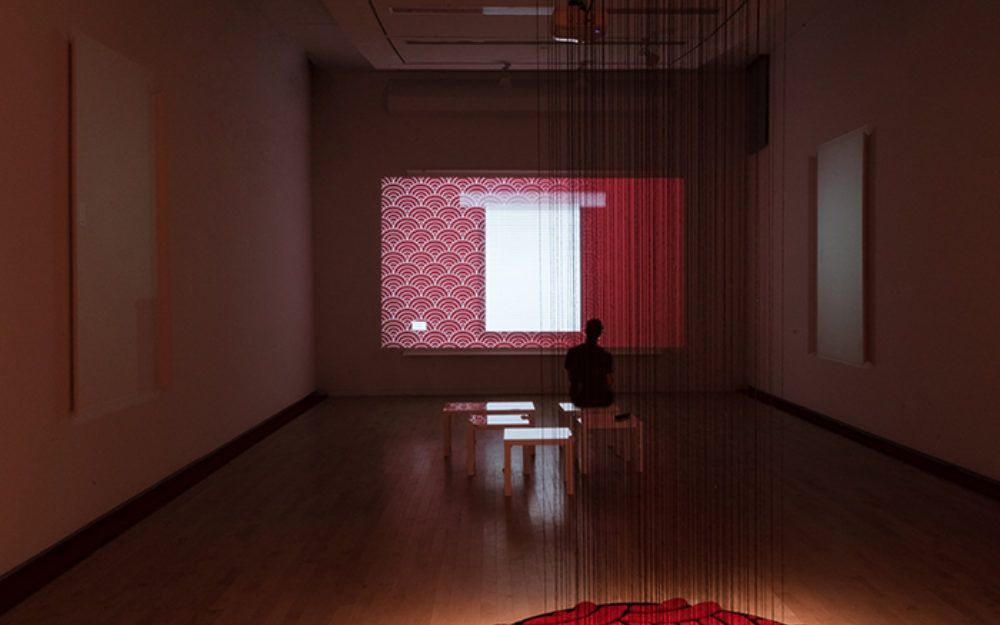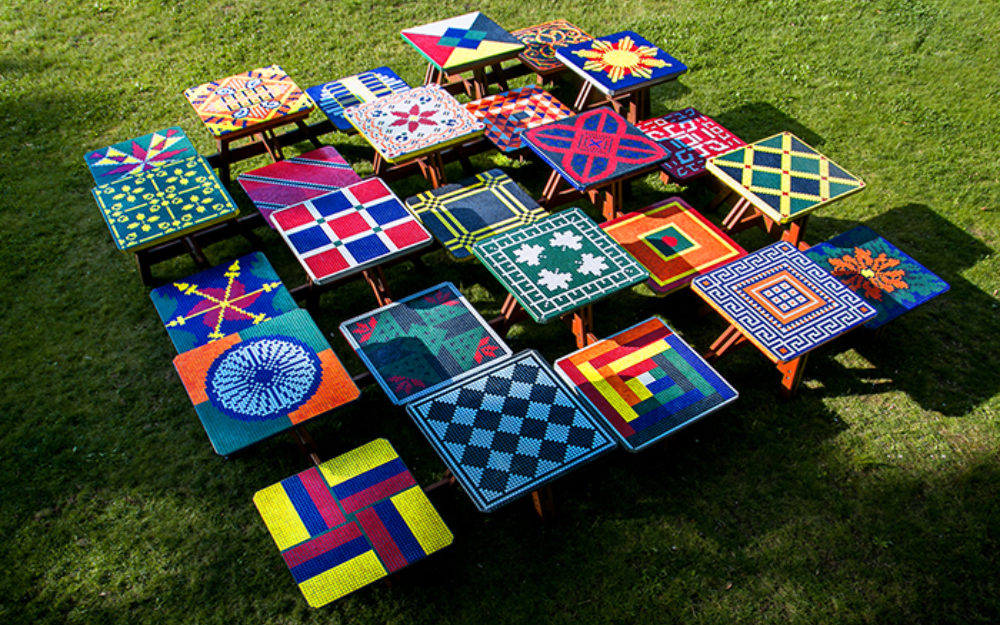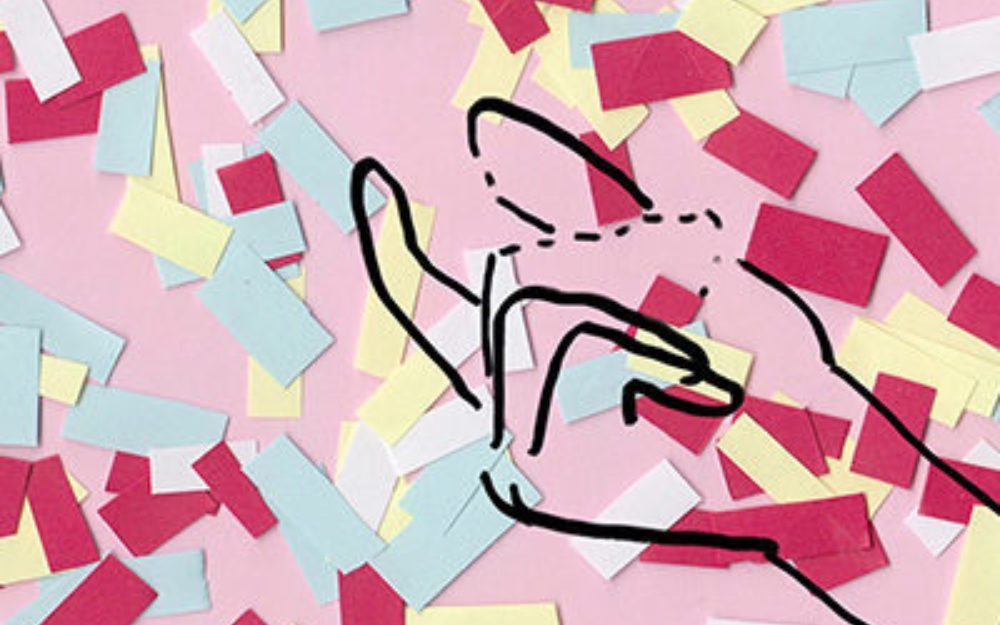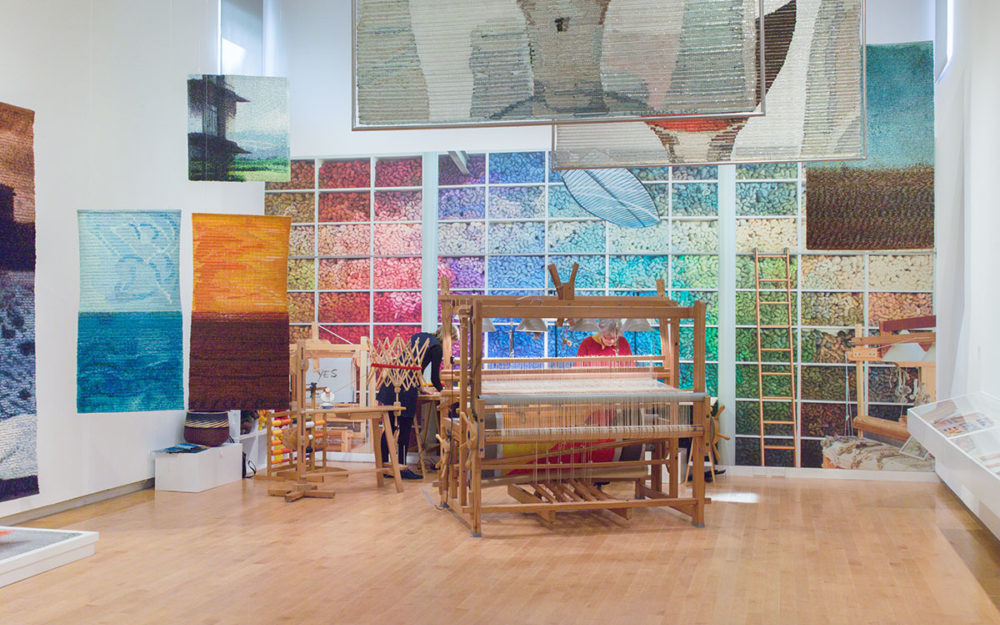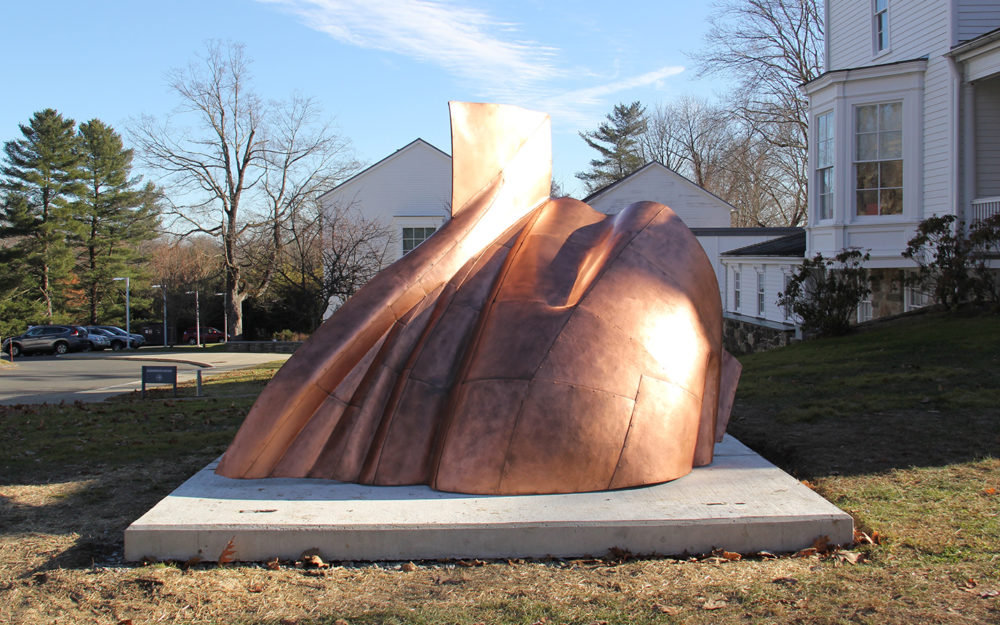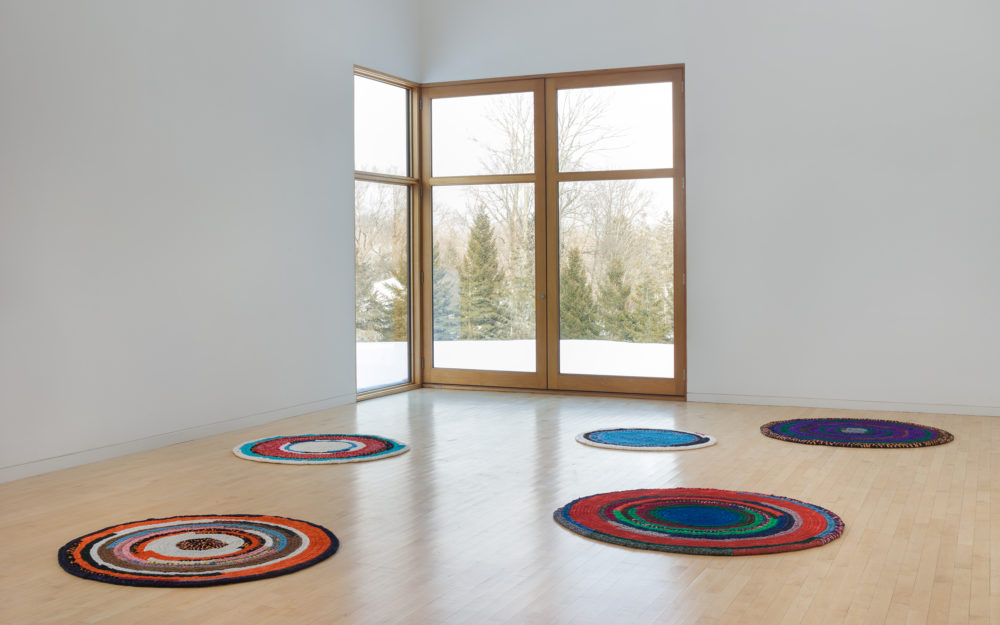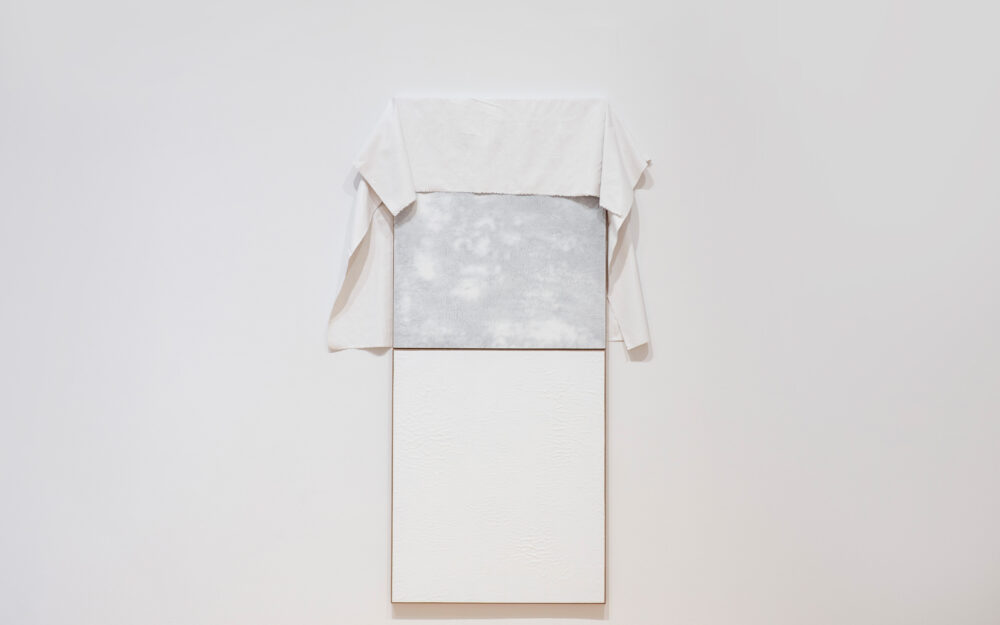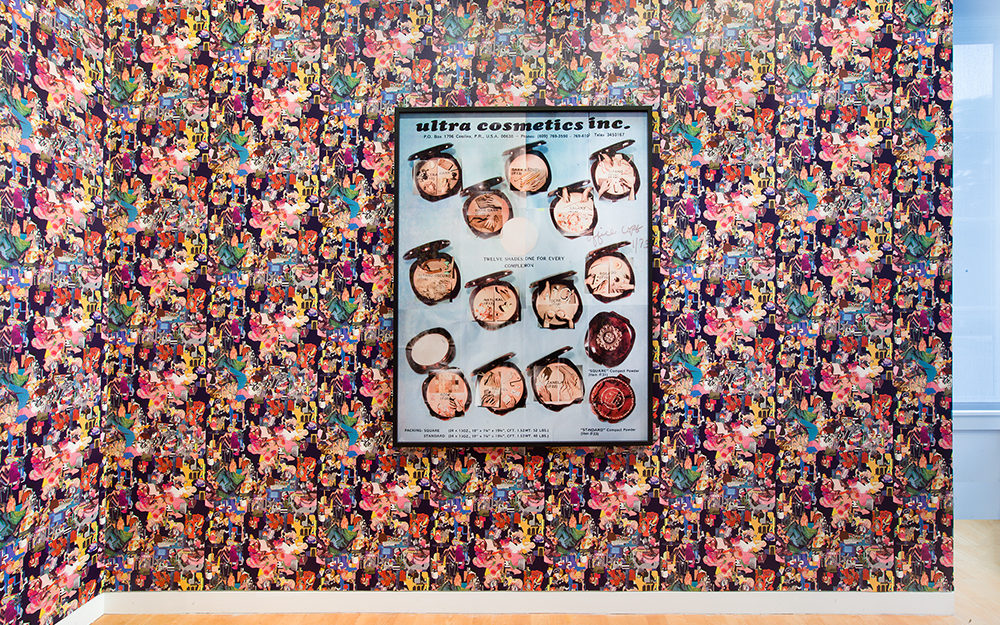- We’re open today from 12 pm to 5 pm
- Purchase tickets
- Join mailing list
- Join as a member
- Donate
Past Exhibitions
Past exhibitions from the
Edward Tufte: Seeing Around
Seeing Around, the first major museum exhibition of the sculpture of Edward Tufte, will be on view from June 13, 2009, to January 17, 2010. The exhibition will take place in The Aldrich’s three-acre Sculpture Garden and the adjacent Project Space gallery.
Gerard Hemsworth: Hidden Agenda
Gerard Hemsworth: Hidden Agenda is the first solo museum exhibition in the United States of work by British artist Gerard Hemsworth, currently professor of Fine Art at Goldsmiths, University of London. Hemsworth’s paintings have the familiarity of storybook pictures, but explore what he calls “the politics of representation.”
Pretty Tough: Contemporary Storytelling
Pretty Tough: Contemporary Storytelling was on view at The Aldrich from June 21, 2009 to January 3, 2010.
Bike Rides: The Exhibition
The multidisciplinary project features approximately thirty works from around the world, including functional cycles—ranging from cutting-edge designs to populist expressions—as well as bicycle-inspired sculpture and video.
Jeanne Finley + John Muse: Sleeping Under Stars, Living Under Satellites
The collaborative team of Jeanne C. Finley and John Muse have based their first major project in the northeast on the sweep of over 200 years of Ridgefield, Connecticut’s, history.
Chad Kleitsch: White Box–Photographs of the Unseen Museum
Chad Kleitsch: White Box–Photographs of the Unseen Museum is on view at The Aldrich Contemporary Art Museum from January 31, 2010 to March 14, 2010.
Paying a Visit to Mary: 2008 Hall Curatorial Fellowship Exhibition
Marc Camille Chaimowicz, Guy de Cointet and Robert Wilhite, Dexter Sinister, Paul Elliman, Experimental Jetset, Melissa Gordon, Gary Hill, Jonas Ohlsson, Willem Oorebeek, Guido van der Werve, and Emily Wardill
Jo Yarrington: Ocular Visions
Jo Yarrington's Ocular Visions is a sustained meditative response to the act--and art--of seeing.
Tom Molloy
As a self-proclaimed moralist artist, Tom Molloy uses his art to “try and understand what the world is about.”
John Shearer: America (Continued)
John Shearer’s career as a photojournalist began in 1964, when at the age of seventeen he became one of the youngest staff photographers for LOOK magazine.
Fritz Haeg: Something for Everyone
Places to learn & teach, compost & grow food, move & dance, gather & converse, and host native flying squirrels are installed throughout the indoor and outdoor public spaces of the Museum, which was originally a private residence.
Beryl Korot: Text/Weave/Line—Video, 1977-2010
This is complex, ruminative, and beautiful work—drawing on Korot’s rich knowledge of literature and history, infused with a lifetime’s commitment to art, music and time-based performance, and rooted in the ancient origins of digital media.
KAWS
This first solo museum exhibition of the work of Brooklyn-based artist and designer Brian Donnelly, a.k.a. KAWS, includes his most recent paintings, sculptures, and drawings, as well as a survey of his iconic street art, apparel, product and graphic designs.
Rackstraw Downes: Under the Westside Highway
This exhibition chronicles the creation of Rackstraw Downes’s three-part painting, Under the Westside Highway at 145th Street: The North River Water Pollution Control Plant, and a related painting of the George Washington Carver housing project at 103rd Street and Park Avenue in New York City.
Gary Lichtenstein: 35 Years of Screenprinting
Gary Lichtenstein: 35 Years of Screenprinting at The Aldrich.
Gina Ruggeri: Immaterial Landscape
Gina Ruggeri’s project for The Aldrich is conceived as a constellation of large-scale paintings on Mylar, cut out and attached flush to the Museum’s walls. The works depict imaginary landscape fragments that merge seamlessly with the gallery’s surfaces, activating the space.
Robert Taplin: Selections from the Punch Series, 2005–10
Sculptor Robert Taplin has recently focused on an ongoing series of works that portray the fictional character Punch and his misadventures in the contemporary world. Rooted deep in Western mythology, Punch is an Anglicized version of Punchinello, the trickster figure that played a major role in sixteenth-century Italian commedia dell’arte.
Robert Taplin: The Young Punch Goes Shopping with His Mother
Robert Taplin: The Young Punch Goes Shopping with His Mother portrays Punch as a five-foot-tall child being led by his towering, eight-foot-tall mother. Punch, who is usually pictured causing trouble, is caught in an awkward and subservient role, emphasizing his male adolescent persona.
Shimon Attie: MetroPAL.IS.
Shimon Attie’s MetroPAL.IS. is an eight-channel immersive HD video installation that features members of the Israeli and Palestinian communities of New York City.
Thilo Hoffmann: High School Portraits
Over the course of the past decade, Swiss artist Thilo Hoffman has consistently worked by intruding—politely—into the lives of individuals and organizations. Working in collaboration with his subjects, he acts more as an impresario than an artist, enabling participants to realize their dreams and wishes via his deceptively simple film and photography projects.
KAWS: Companion (Passing Through)
Companion (Passing Through) is an outdoor project by Brooklyn-based artist Brian Donnelly, a.k.a. KAWS, who had his first solo museum exhibition at The Aldrich in 2010. On this occasion, KAWS presents a more than sixteen-foot-high sculpture of his Companion, sitting down with both gloved hands covering its face.
Timothy White: Portraits
Timothy White: Portraits was on view at The Aldrich in January 2011 through June 2011.
Hope Gangloff: Love Letters
Hope Gangloff was born in Amityville, New York, in 1974. She studied fine art at Cooper Union in New York and for many years made her living by doing illustrations for publications such as The New York Times and The New Yorker and working in a foundry.
James Esber: Your Name Here
This exhibition brings together two separate but related bodies of work that James Esber has pursued for the past two years.
Jenny Dubnau: Head On
Jenny Dubnau’s series of portraits for her exhibition at The Aldrich includes artists Shimon Attie, James Esber, Thilo Hoffmann, herself, and some Museum staff members. All the artists represented are currently exhibiting at the Museum during this semester in which the work on view relates to the theme of Portraiture.
Kate Eric: One Plus One Minus One
Kate Eric is a decade-old collaborative identity comprised of Kate Tedman and Eric Siemens. The married couple spend part of their time in San Francisco and part in Italy, where they own a rural house that provides the perfect setting for long spans of isolation.
Jessica Stockholder: Hollow Places Court in Ash-Tree Wood
In 2009 an ailing, 125-year-old American ash tree was cut down in The Aldrich’s Sculpture Garden. It was agreed that the wood should be offered to an artist, and sculptor Jessica Stockholder was invited to utilize it in an exhibition.
Type A: Barrier and Trigger
The artists’ collaborative Type A (Adam Ames and Andrew Bordwin) has consistently made work that deals with boundaries—both real and imagined.
Judi Werthein: Do You Have Time?
Do You Have Time? is a film by Argentinean artist Judi Werthein. The project originated when Werthein encountered David Kleinman, the father of a friend and colleague, at a panel discussion held at the New Museum on Julieta Aranda’s work, where the topic of the conversation revolved around memory.
Chelpa Ferro: Visual Sound
Independently renowned artists Barrão, Luiz Zerbini, and Sergio Mekler got together in 1995 under the umbrella “Chelpa Ferro”—Portuguese slang for money and steel—with the objective of doing some leisurely experimentation outside the constraints of their primary individual art careers.
MTAA: All the Holidays All at Once
MTAA is a Brooklyn-based artists’ collective that originated in 1996 and comprises Michael Sarff and Tim Whidden. The practice of this troupe is based in performance and relies on the participation of the community to create the work, which is generally ephemeral.
Andrea Dezsö: Haunted Ridgefield
The Aldrich Contemporary Art Museum is pleased to announce the opening of Andrea Dezsö: Haunted Ridgefield—the latest installment of the popular Main Street Sculpture Project—featuring folklore, fantasies, and fears.
Jim Dingilian: Subtractive Images
Jim Dingilian has developed a body of work in which he painstakingly renders ephemeral imagery by hand on found objects.
Kathryn Spence: Dirty and Clean
San Francisco-based artist Kathryn Spence is inspired by nature in the production of her sculptures and installations.
Xu Bing: Tobacco Project
Xu Bing, one of China's most acclaimed contemporary artists, is known especially for his exploration of language. In Tobacco Project he furthers that interest, presenting the culture of tobacco as a far-reaching system of signs and symbols.
James Grashow: Corrugated Fountain
Corrugated Fountain, was inspired by the Trevi Fountain in Rome, Bernini’s famous Baroque sculpture that was completed in 1762.
FOUND Outside
Joy Curtis, Ethan Greenbaum, Jason Clay Lewis, Saul Melman, Jessica Segall, and Jean-Marc Superville-Sovak
united states
united states is a semester of solo exhibitions and artist’s projects that approach both the nature of the United States as a country and “united states” as the notion of uniting separate forms, entities, or conditions of being.
Brody Condon: To prove her zeal one woman ate mud.
Brody Condon’s work often addresses the over-identification with fantasy prevalent in American culture.
Brian Knep: Deep Wounds
In 2006, Brian Knep was invited to produce a work for Harvard University following a year-long residency. The artist chose as his location Memorial Hall, a building erected in the 1870s in remembrance of Harvard students who died in defense of the Union during the Civil War.
Erik Parker: Too Mad to Be Scared
The Aldrich’s exhibition of the work of Erik Parker focuses on his lyrical maps, which present and document a timely, poignant, and thoroughly critical overview of the obscure socio-political and economic dynamics of the United States.
Brad Kahlhamer: Bowery Nation
Brad Kahlhamer’s gallery-filling installation, Bowery Nation, brings together 100 small, figurative sculptures that speak not only of the artist’s Native American roots, but also to his time spent with the vibrant creative community on New York City’s Lower East Side.
Pedro Barbeito: Pop Violence
Spanish-born, New York-based artist Pedro Barbeito’s exhibition at The Aldrich presents a series of work ranging from 2005 to the present. The paintings in Pop Violence are based on images of war drawn from American entertainment and news media.
Jonathan Brand: One Piece at a Time
One Piece at a Time, pays homage to Johnny Cash’s song about a car assembly line worker’s fantasy of owning a Cadillac by removing one auto part at a time, stashed in his lunch box, and assembling it at home. Similarly, Brand re-created his car one piece at a time.
Hank Willis Thomas: Strange Fruit
Partially inspired by Harvey Young’s recent book, Embodying the Black Experience: Stillness, Critical Memory, and the Black Body, this exhibition is a visual and conceptual exploration of the black body as spectacle and souvenir in American popular culture.
Wendell Castle: Wandering Forms — Works from 1959–1979
Celebrated American designer/craftsman Wendell Castle (b. 1932) has been creating unique pieces of handmade sculpture and furniture for over five decades.
Harry Dodge: MEATY BEATY BIG AND BOUNCY
Transitive states, simultaneous multiplicities, and the trouble with (or the troubling of) definition are central concerns in Harry Dodge’s interdisciplinary practice.
Robert Longo: The Capitol Project
Robert Longo’s artworks represent diverse fragments, contained within as well as sprung from a restlessly circulated and widely shared image-archive; surrogated archetypes of war, revolt, beauty, love, sex, power, religion, politics, culture, transgression, and subjugation.
Jane South: Floor/Ceiling
South’s large-scale works are notable due to being made almost entirely out of painted, cut, and glued paper.
Dan Miller and Judith Scott: Creative Growth
The Creative Growth Art Center in Oakland, CA, was founded in 1972 and serves a community of mentally, developmentally, and physically disabled adult artists.
Ballpoint Pen Drawing Since 1950
This exhibition and its accompanying publication bring together the work of eleven artists who have done extensive work with the pen, disproving the view that the ballpoint does not have aesthetic potential and that its range is limited.
Amelie Chabannes: Double Portraits and a Fourth Hand
In 2009, Amelie Chabannes began working with identity as a subject, not via the usual autobiographical route, but rather through combining an objective interest in philosophy, psychology, and art history.
Allison Smith: Rudiments of Fife & Drum
Rudiments of Fife & Drum is the culmination of a year-long project organized by the artist Allison Smith in collaboration with The Aldrich Museum.
Legacy: Photographs from the Emily Fisher Landau Collection
Legacy: Photographs from the Emily Fisher Landau Collection features a notable selection of photographs drawn exclusively from the collection of works gifted to the Whitney Museum of American Art in 2010 by New York philanthropist and art collector, Emily Fisher Landau.
Xaviera Simmons: Underscore
Xaviera Simmons’s body of work spans photography, performance, video, sound and installation.
Simon Blackmore: Three Sound Works
For artist Simon Blackmore, the nature and history of musical translation and its relationship to technology has provided a rich area for inquiry.
Martin Creed: Scales
The multifarious activities of Martin Creed—visual artist, composer, musician, performer, and choreographer—are received and contextualized as artworks, yet he resists that definition; rather, he catalogues his output by a simple taxonomy: a number followed by a descriptive title.
Sol LeWitt: The Music Collection
The Music Collection is just what the title of the exhibition implies, a view into LeWitt’s amassing of both scores by contemporary composers and an encyclopedic library of recorded music.
James Mollison: The Disciples
In 2005 James Mollison began a four-year project to photograph not the musicians, but the fans of a cross section of popular music acts in both the United States and Europe.
The Aldrich Collection 1964-1974: Standing in the Shadows of Love
The Aldrich is marking its 50th Anniversary with a series of exhibitions and programs that examine the Museum’s formative years of 1964 to 1974 through a contemporary lens, illuminating the lasting impact of a seminal period of history.
Jack Whitten: Evolver
Jack Whitten: Evolver is one of a series of exhibitions mounted in connection with The Aldrich’s 50th Anniversary that presents the recent work of artists who played a significant role during the first decade of the Museum’s history.
Michael Joo: Drift
Over a career that now spans two decades, Michael Joo has redefined sculpture, creating a body of work that transcends the seduction of technology and the easy answers offered by science to generate a set of questions that place humankind in the context of natural history.
Michelle Lopez: Angels, Flags, Bangs
Sculptor Michelle Lopez explores the contested yet generative place where Minimalism and Feminism converge, diverge, and ultimately reunite.
Taylor Davis: If you steal a horse, and let him go, he’ll take you to the barn you stole him from
Davis’s deep interest in sculpture is based in the way that a viewer’s orientation can be influenced by the perception of both form and language in space, and how this experience is an analogy to the ongoing need to constantly orient oneself in relationship to the world.
Jessica Jackson Hutchins: Unicorn
Unicorn presents eight works by Jessica Jackson Hutchins, spanning video, sculpture, collage and monoprints, and a new large-scale sculpture.
David Diao: Front to Back
David Diao: Front to Back is the second in a series of exhibitions in The Aldrich’s 50th Anniversary year that presents the work of artists whose careers are intimately tied to the history of the Museum.
Ernesto Neto: The Body That Gravitates on Me
Ernesto Neto has become internationally known for translucent organic sculptures that often take on architectural proportions.
David Scanavino: Imperial Texture
Scanavino debuts a site-specific floor sculpture and a monumental wall relief, turning the South Gallery into both an experiential installation and engaging platform for interactivity.
Kate Gilmore: A Roll in the Way
The practice of Kate Gilmore spans video, sculpture, photography, performance, and installation.
Mary Beth Edelson: Six Story Gathering Boxes (1972-2014)
This participatory exhibition brings together six of Mary Beth Edelson’s ground-breaking story gathering boxes—a project initiated in 1972 that is still ongoing—seminal contributions that encapsulated an evolving feminist art legacy and evidenced the very first vestiges of what is familiarly known today as “social practice.”
Cary Smith: Your Eyes They Turn Me
Over the course of the past twenty-five years, the painter Cary Smith has engaged in a restless, but controlled, pursuit of abstraction.
Jackie Winsor: With and Within
Winsor’s sculpture embraces the unification of opposing forces to evoke a singular vitality, which is given form through technical ingenuity and unparalleled craftsmanship.
Virginia Poundstone: Flower Mutations
Virginia Poundstone’s practice spans photography, sculpture, video, and installation, and is exclusively focused on the history and botany of the flower and its socio-economic and cultural significance.
Nancy Shaver: Reconciliation
Nancy Shaver, in a career that has spanned four decades, has consistently worked to challenge expectations on the aesthetic hierarchies found in visual culture.
Ruby Sky Stiler: Ghost Versions
Ruby Sky Stiler's cast reliefs originate from compositions of detritus from previous works and fragments of left-over materials salvaged from around her studio, making ghostly references to objects she describes as “not present and no longer in existence.”
Penelope Umbrico: Shallow Sun
For artist Penelope Umbrico, light, and our changing relationship to it, has become one of the main subjects of a practice that challenges what normally constitutes ideas about photography and its presence in our lives.
B. Wurtz: Four Collections
For more than forty years, B. Wurtz has been transforming throwaway objects found in daily life—shoelaces, plastic bags, food containers, buttons, socks, hangers—into elegant, poetic compositions that evoke the condition of being human.
Elif Uras: Nicaea
The paintings and ceramic sculptures of Elif Uras explore what she describes as “shifting notions of gender and class within the context of the struggle between modernity and tradition.”
Sloth, Seven Deadly Sins
Sloth is The Aldrich’s contribution to Seven Deadly Sins, the first programmatic collaboration between The Fairfield Westchester Museum Alliance.
Steve DiBenedetto: Evidence of Everything
In a career that spans three decades, Steve DiBenedetto (b. 1958, Bronx, New York) has established himself as an idiosyncratic artist who has brought the pursuit of painting into the unpredictable chaos and flux that categorize the Post-Modern world.
Hayal Pozanti: Deep Learning
The practice of Hayal Pozanti (b. 1983, Istanbul, Turkey) spans painting, digital animation, and sculpture.
Julia Rommel: Two Italians, Six Lifeguards
For her first solo museum exhibition, Julia Rommel (b. 1980, Salisbury, Maryland) will debut a series of new paintings presented alongside small works from 2010 to 2012.
Ruth Root: Old, Odd, and Oval
Old, Odd, and Oval will be Ruth Root’s (b. 1967, Chicago) first solo museum exhibition in the United States.
David Brooks: Continuous Service Altered Daily
Continuous Service Altered Daily is a site-engaged sculptural array, or, as David Brooks refers to it, an “asteroid field without a distinctive beginning or end.”
Peter Liversidge: Proposals for The Aldrich
For the past decade, Peter Liversidge’s practice has focused on the creation of conceptually based proposals that describe artworks that might—or might not—be realized.
Kim Jones: White Crow
White Crow is one continuous installation, echoing the importance of memory and the life Kim Jones has lived in his practice as an artist.
Virginia Overton
Virginia Overton is a site-responsive artist. She makes sculptures, installations, photographs, and videos that relate to and interact with a venue’s architecture and defining landscape.
Kay Rosen: H Is for House
H Is for House is Kay Rosen’s first solo museum exhibition in the northeast in almost twenty years.
William Powhida: After the Contemporary
For more than a decade Powhida’s work has provided a satirical, political, and sometimes despairing window into his own experience of New York’s contemporary art market.
Beth Campbell: My Potential Future Past
Beth Campbell: My Potential Future Past is Campbell’s first museum survey. This exhibition will present three interrelated bodies of work, the Potential Future Drawings series (1998–present), Mobiles (2008–present), and the Future Past Drawings series (2014–present).
Suzanne McClelland: Just Left Feel Right
Suzanne McClelland: Just Left Feel Right, is McClelland’s first museum survey. Spanning twenty-five years, Just Left Feel Right focuses on works from specific periods of her career that share a distinctive commonality.
Tony Matelli: Hera
The Aldrich Contemporary Art Museum is pleased to present Tony Matelli’s Hera, a monumental sculpture, as part of the Main Street Sculpture series.
Robert Longo: Untitled (Dividing Time)
The Aldrich Contemporary Art Museum is pleased to present the fourth public artwork in Creative Time’s Pledges of Allegiance series: Untitled (Dividing Time), by Robert Longo.
Anissa Mack: Junk Kaleidoscope
Anissa Mack mines Americana, its artifacts, folklore, and rituals, and explores American vernacular traditions.
Alex Schweder and Ward Shelley: Your Turn
Alex Schweder and Ward Shelley: Your Turn is an architectural environment for two that shapes the occupants’ behavior.
Shared Space: A New Era
The Aldrich Contemporary Art Museum is pleased to present Shared Space: A New Era, an exhibition of photographs and video from 1987 through 2010 that considers the world’s social, economic, and political climate over the past thirty years.
The Domestic Plane: New Perspectives On Tabletop Art Objects
The Domestic Plane: New Perspectives on Tabletop Art Objects, is a meta-group exhibition in five chapters—organized by five curators, including more than seventy artists.
Analia Segal: contra la pared
The Aldrich Contemporary Art Museum is pleased to present Analia Segal: contra la pared, a solo exhibition of the artist’s recent work.
Risa Puno: Common Ground
Common Ground is an interactive sculpture created by New York City-based artist and Aldrich alumna Risa Puno that celebrates harmony and inclusion through diversity.
Main Street Video
An engaging line-up of short video works by some of the most exciting artists working in this medium.
Helena Hernmarck: Weaving in Progress
The Aldrich Contemporary Art Museum is pleased to present Helena Hernmarck: Weaving in Progress, organized by The Aldrich’s interim co-director Richard Klein.
Danh Vo: We the People (Detail)
The Aldrich Contemporary Art Museum is pleased to present Danh Vo’s We the People (detail) as part of the Main Street Sculpture series.
How Art Changed the Prison
The Aldrich Contemporary Art Museum is pleased to present an exhibition of visual art made in Connecticut’s correctional institutions over the past three decades, borrowed from current and former inmates, private collections, including that of the curator, and from the permanent collection of the Prison Arts Program.
Harmony Hammond: Material Witness, Five Decades of Art
The Aldrich Contemporary Art Museum is pleased to present the first museum survey of the work of the trailblazing artist, feminist and lesbian scholar, curator, activist, and author Harmony Hammond.
N. Dash
N. Dash’s work spans painting, sculpture, photography and drawing and employs both natural and manmade materials, including pigments, adobe/ mud, jute, graphite, fabric, polystyrene, and found objects.
Sara Cwynar: Gilded Age
The Aldrich Contemporary Art Museum will host the New York-based Canadian artist Sara Cwynar’s (b. 1985, Vancouver) first solo museum exhibition on the East Coast, Gilded Age.
